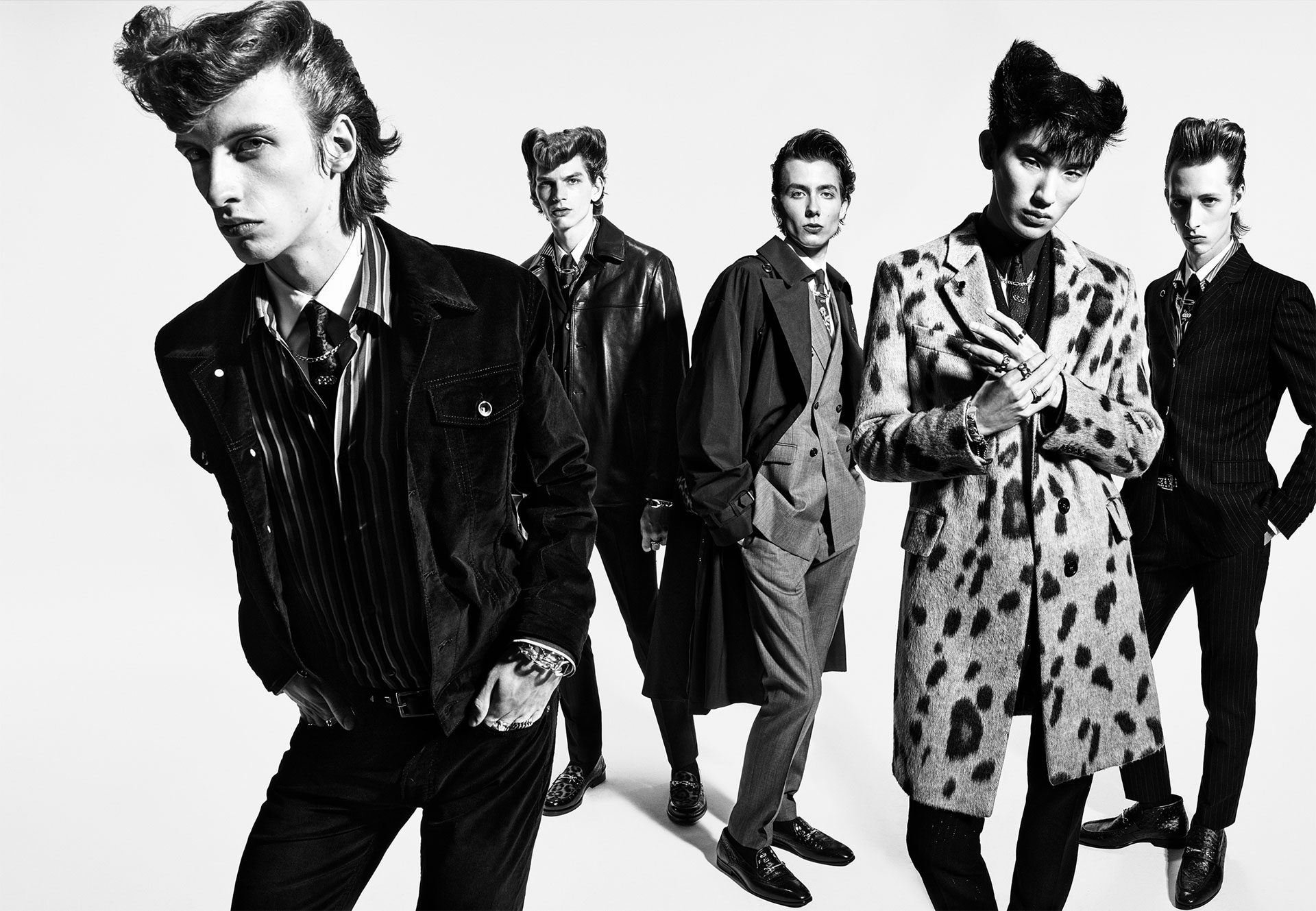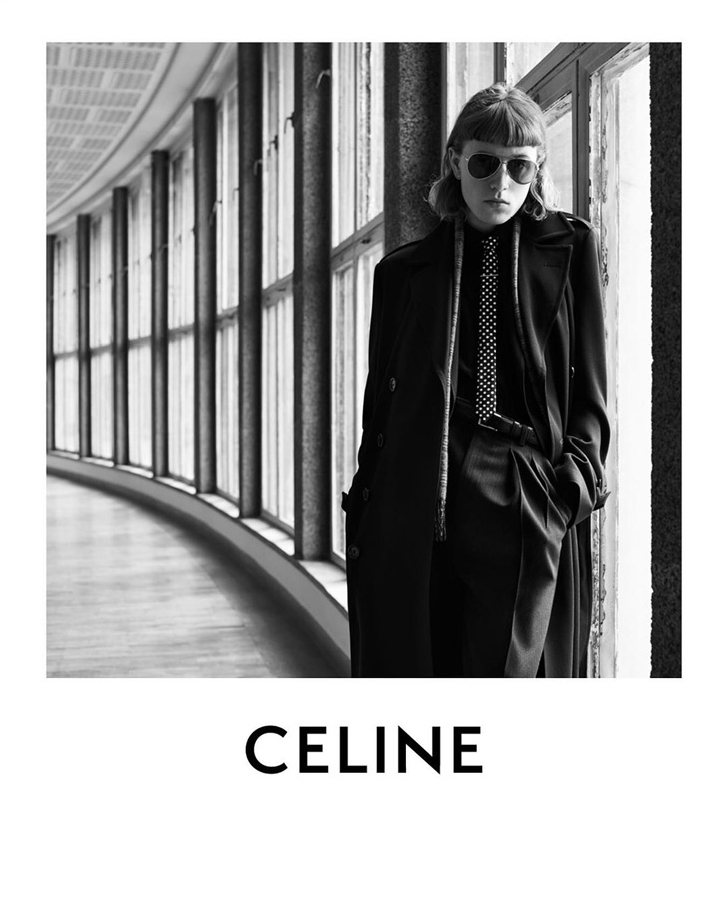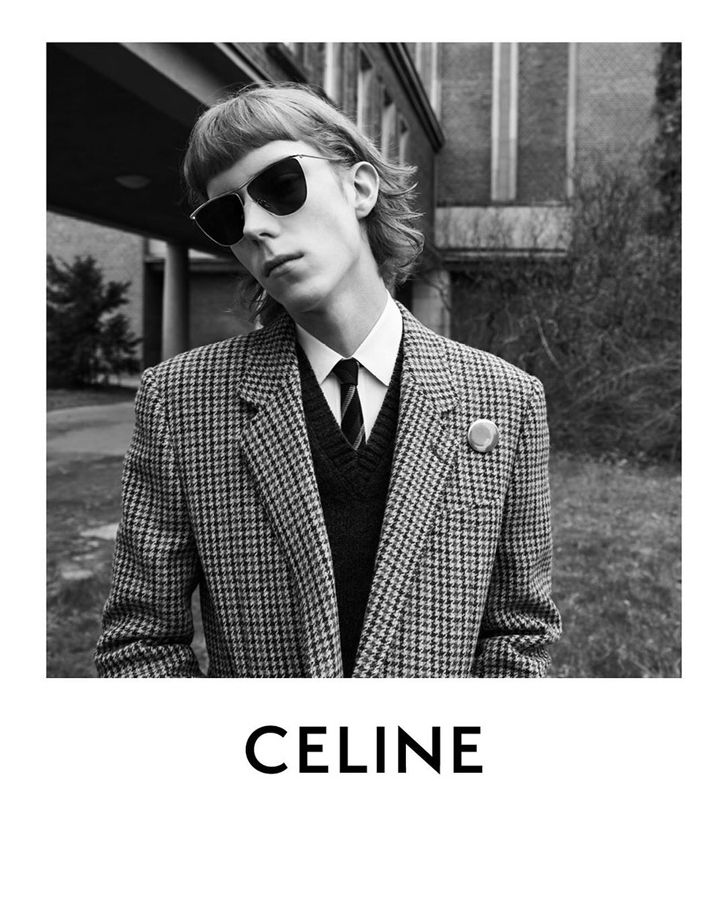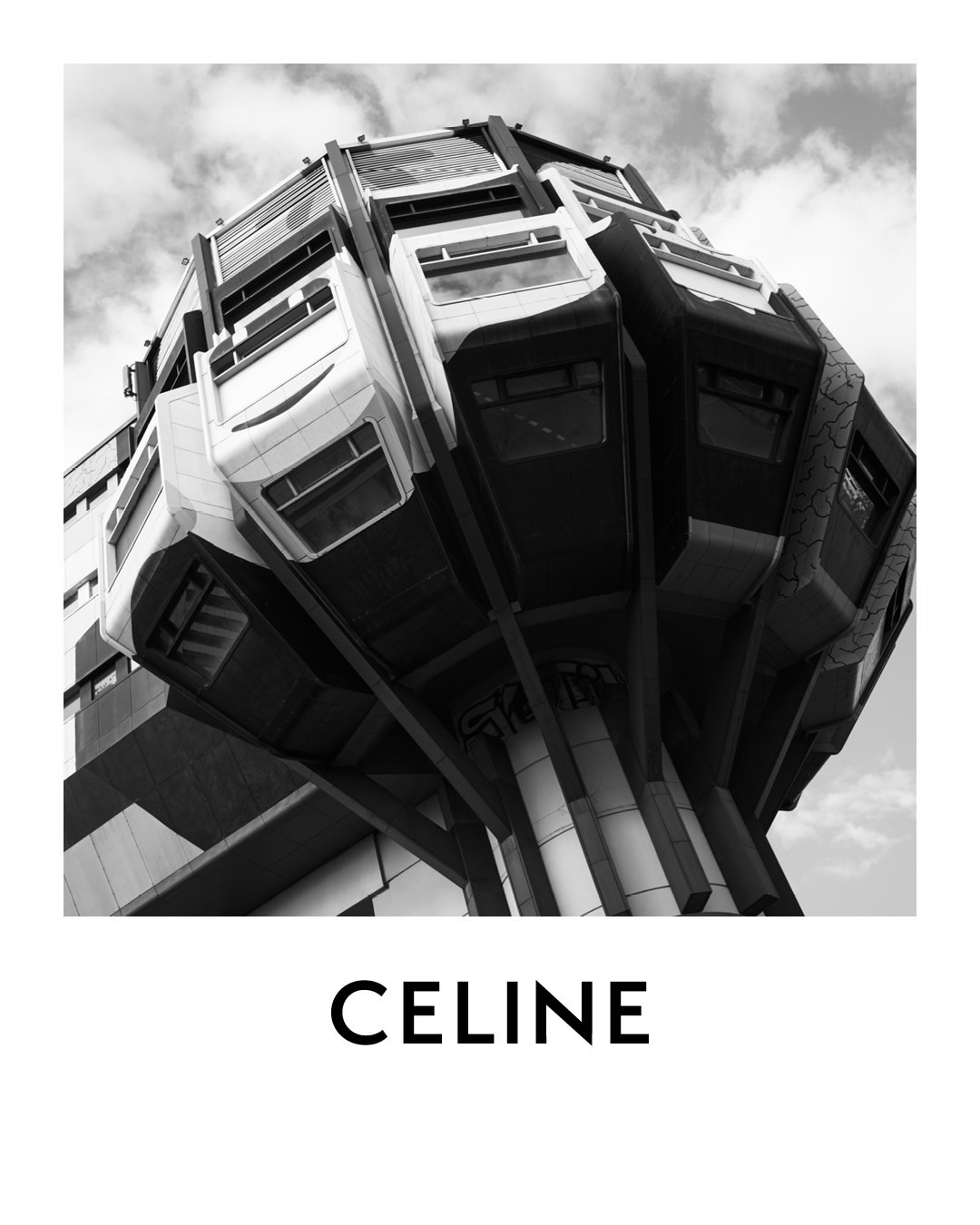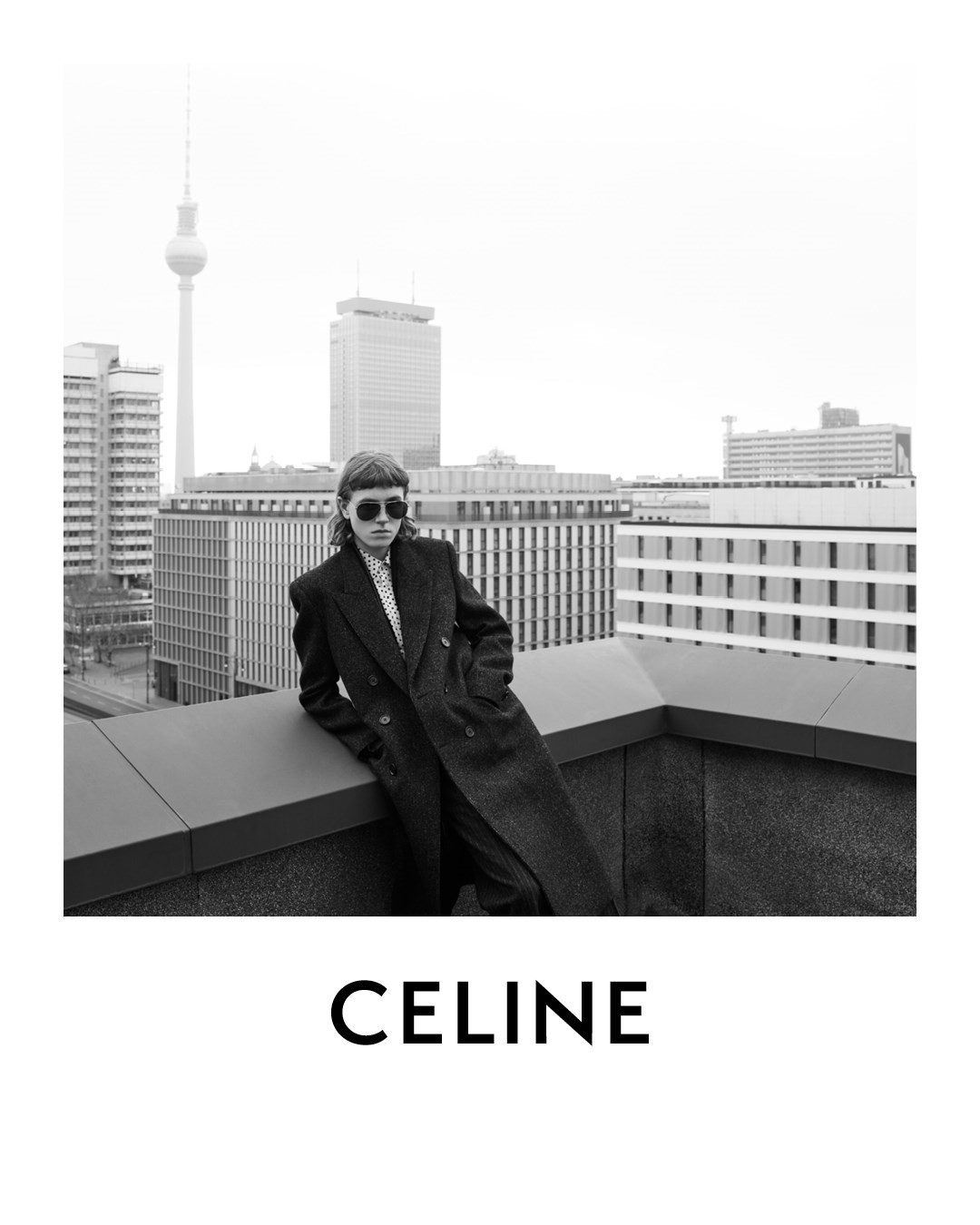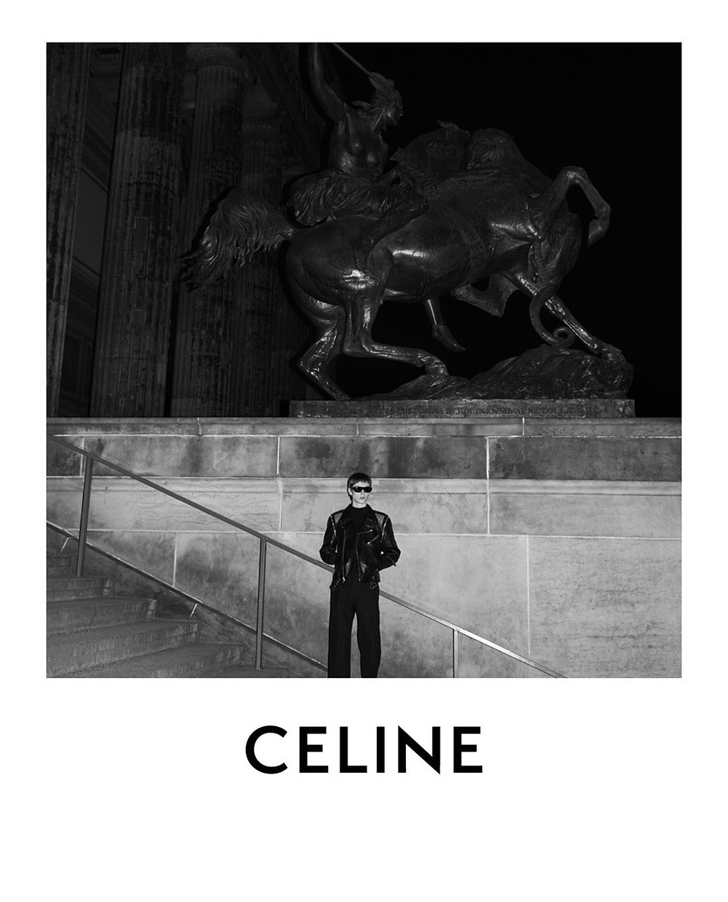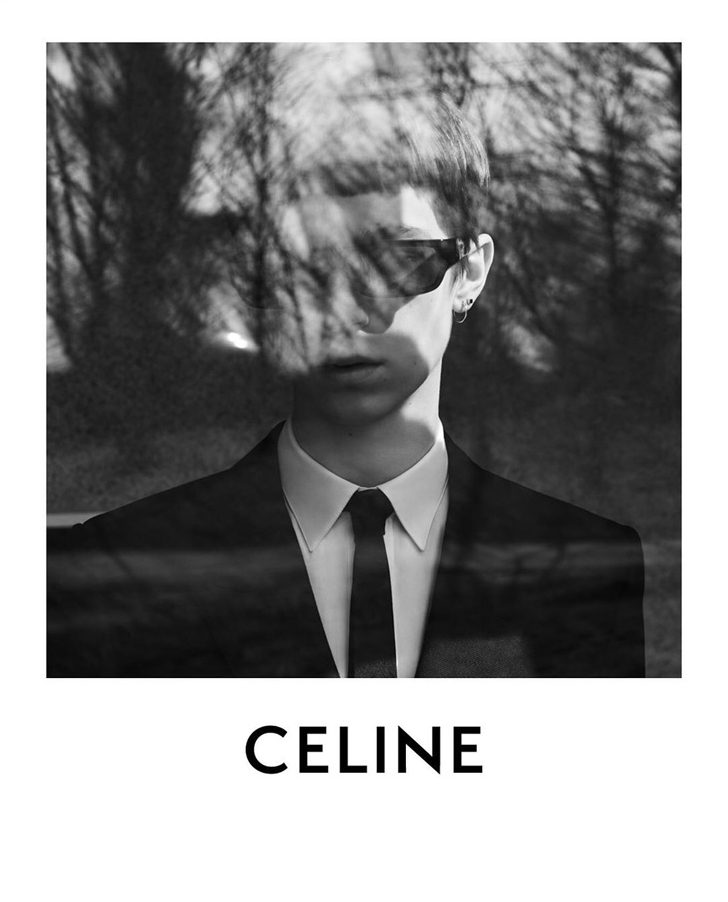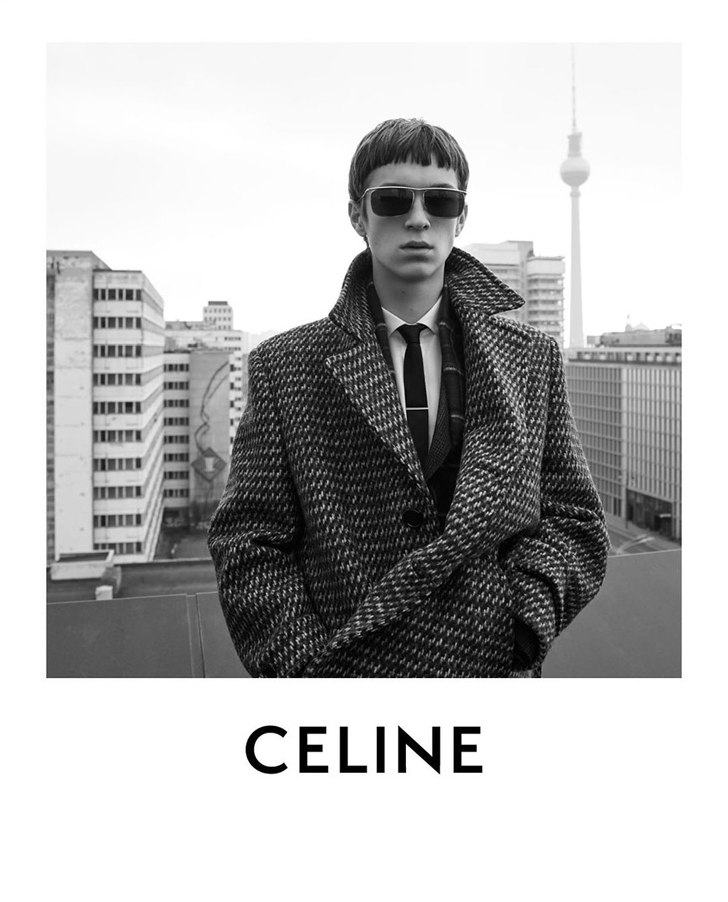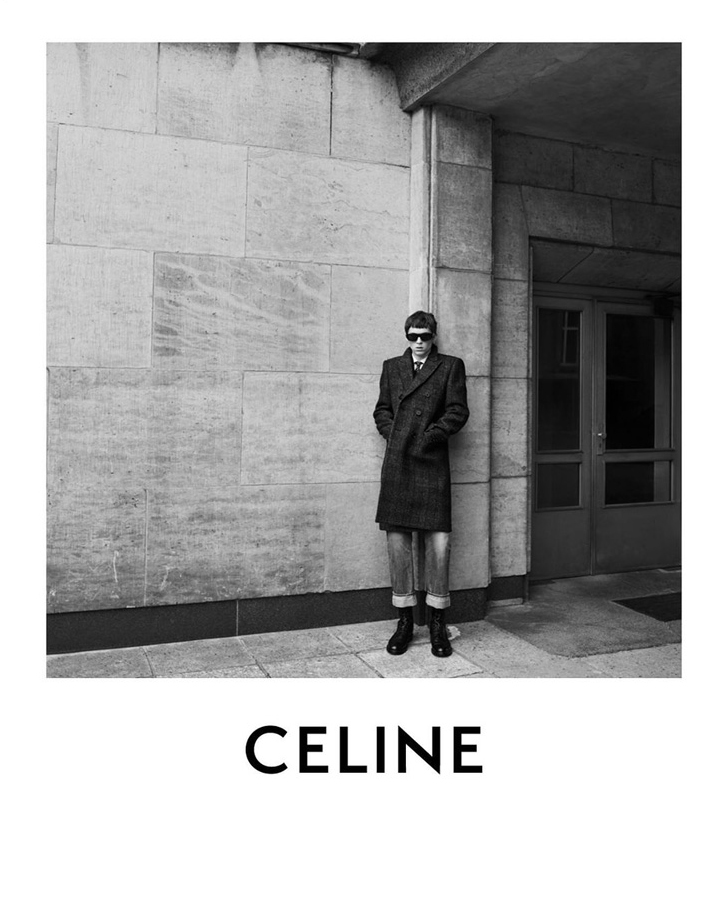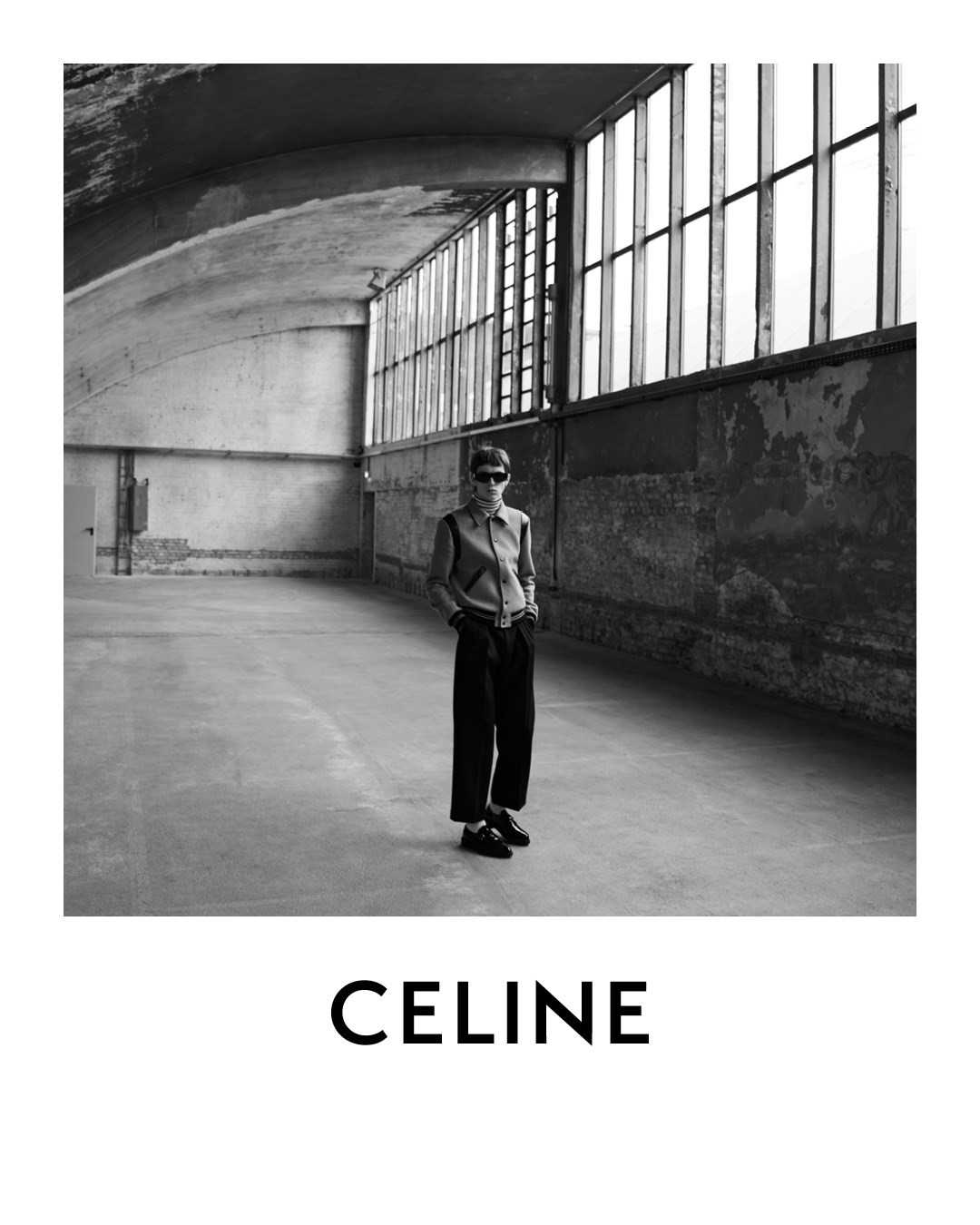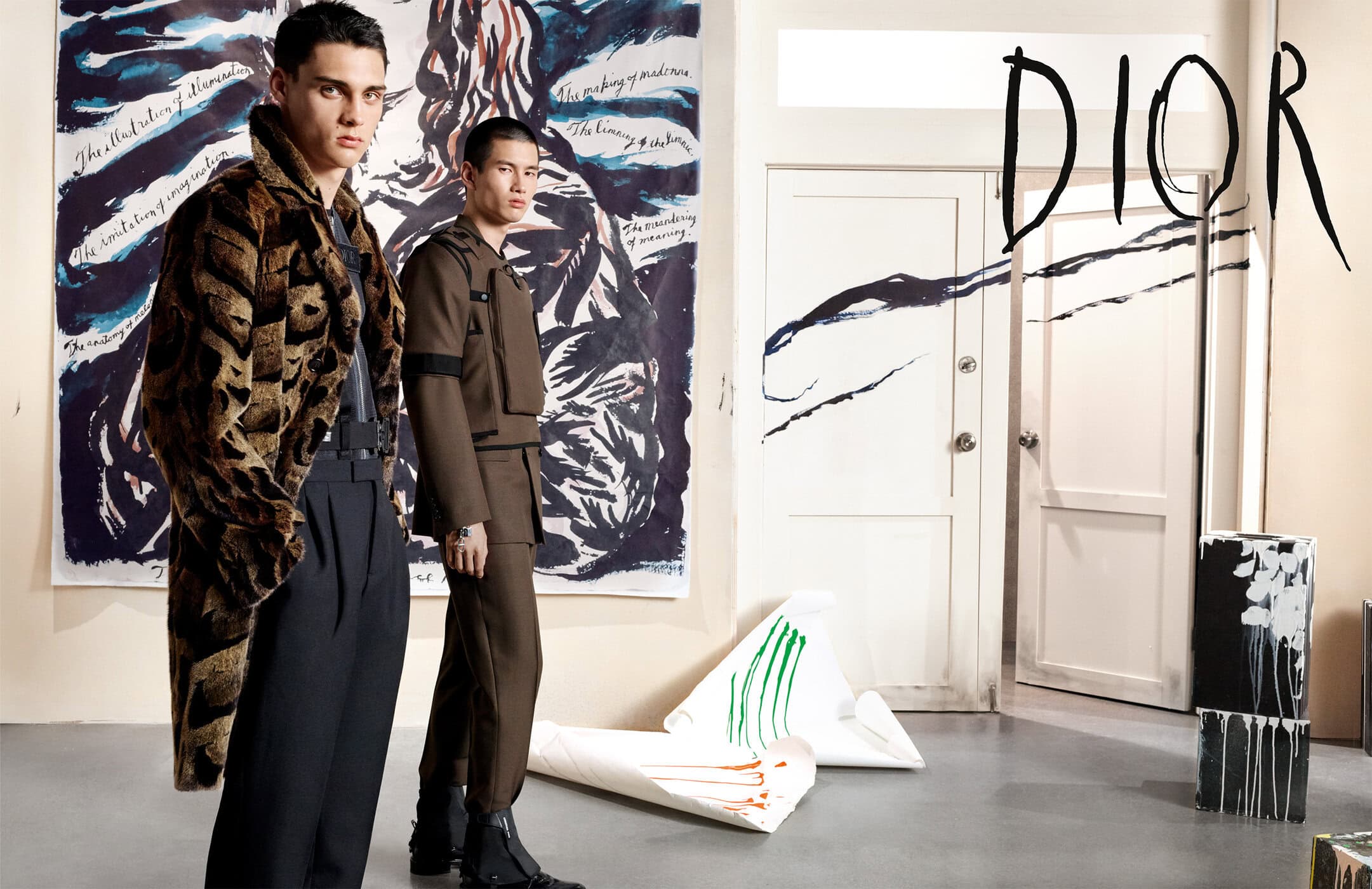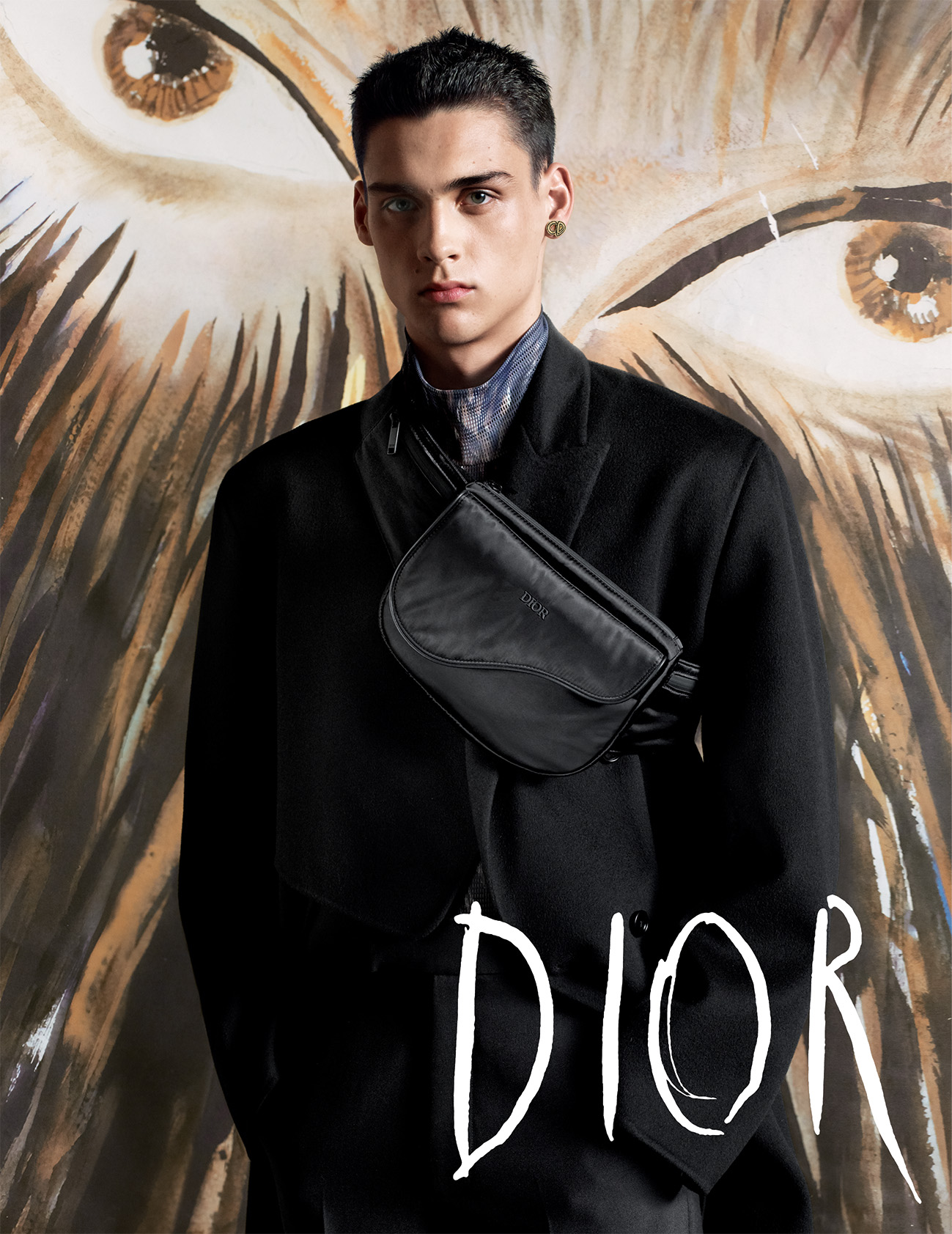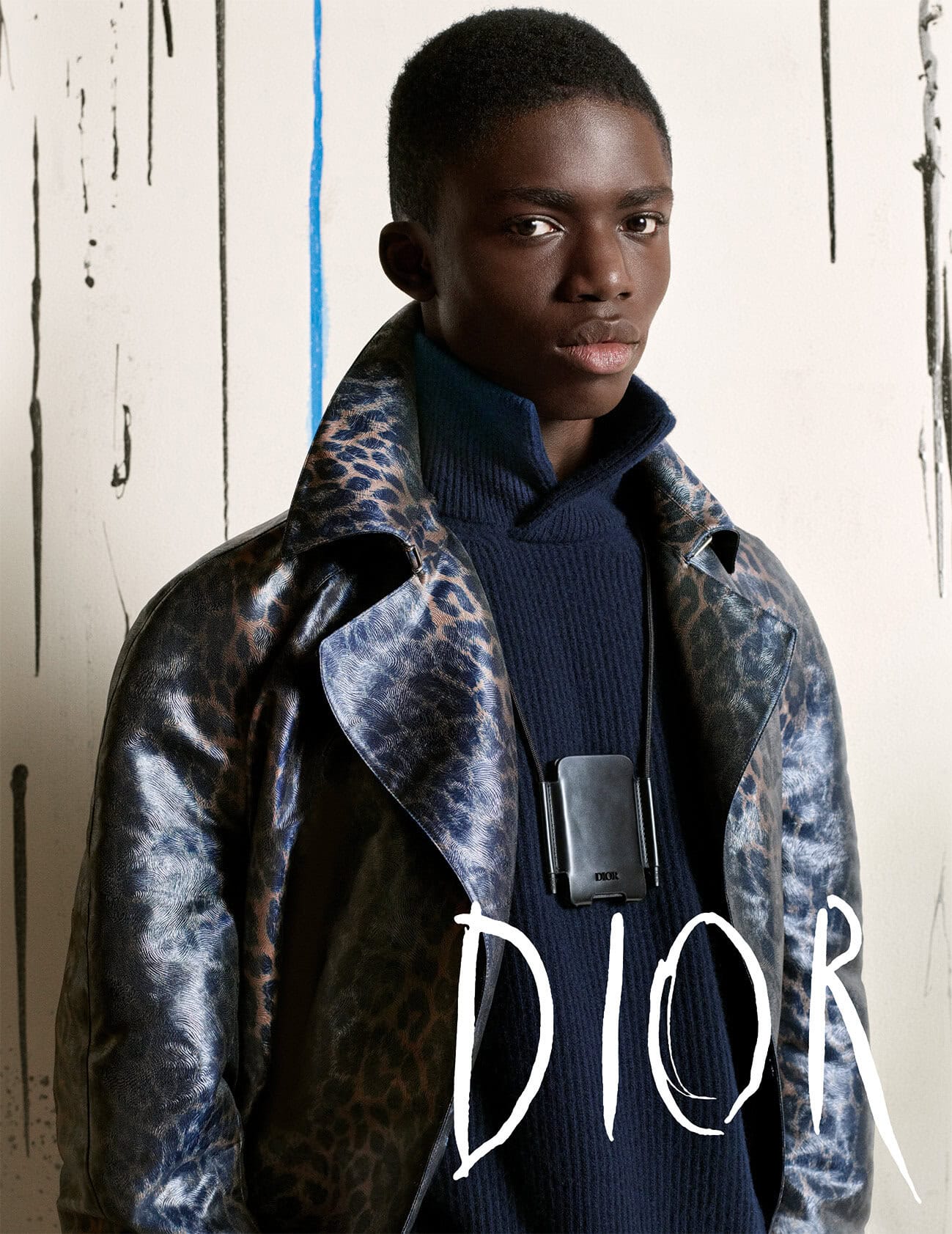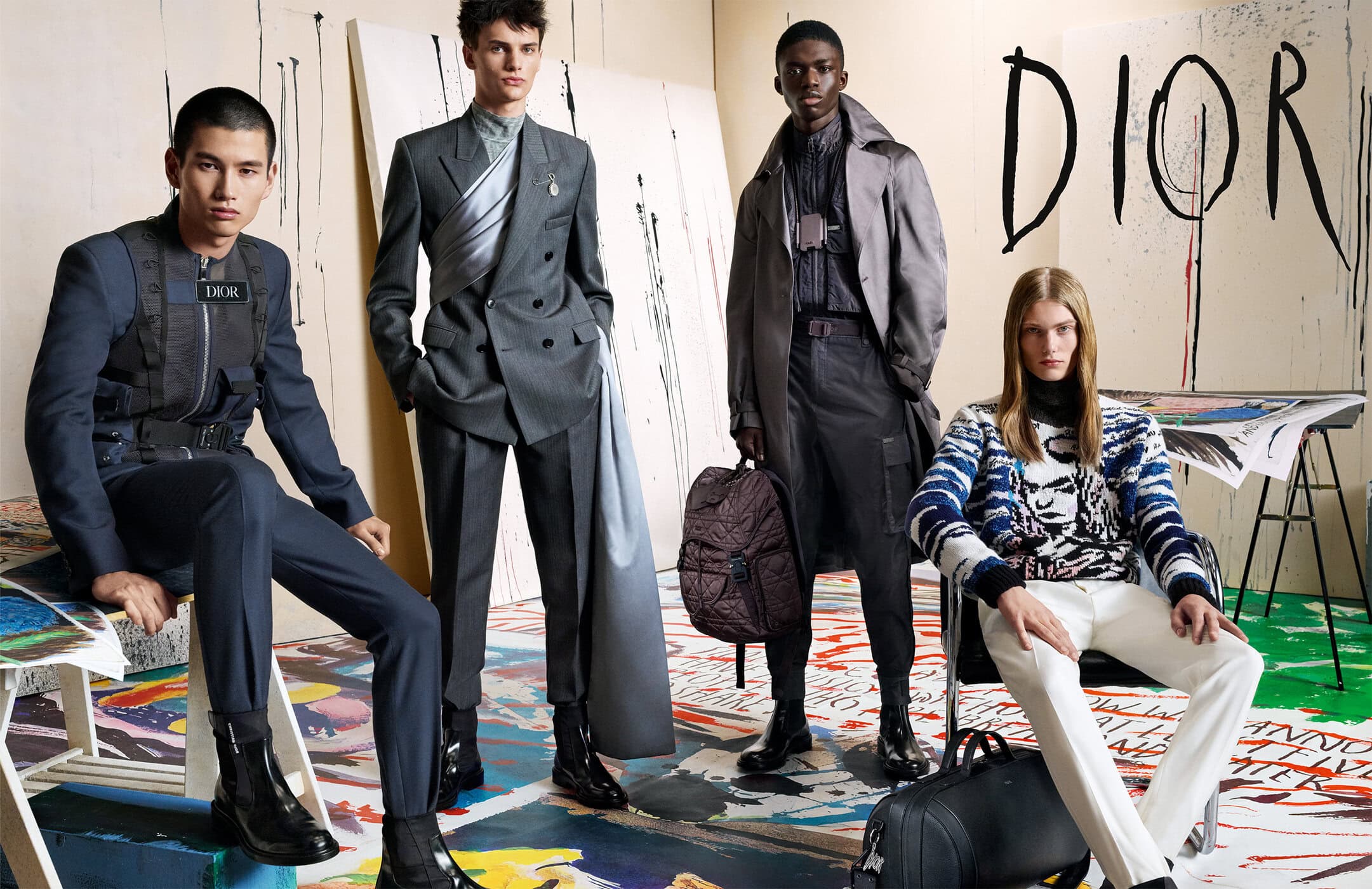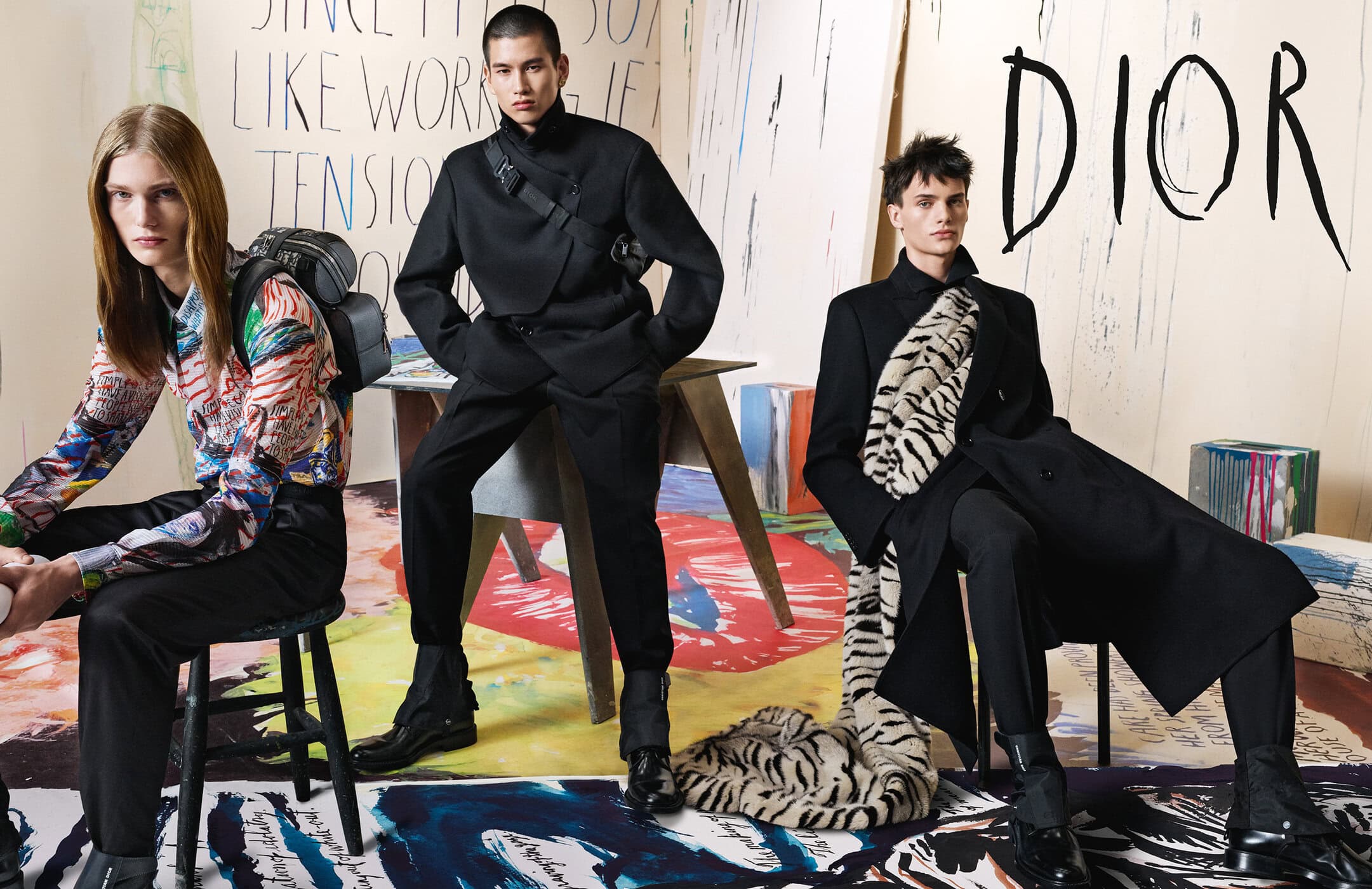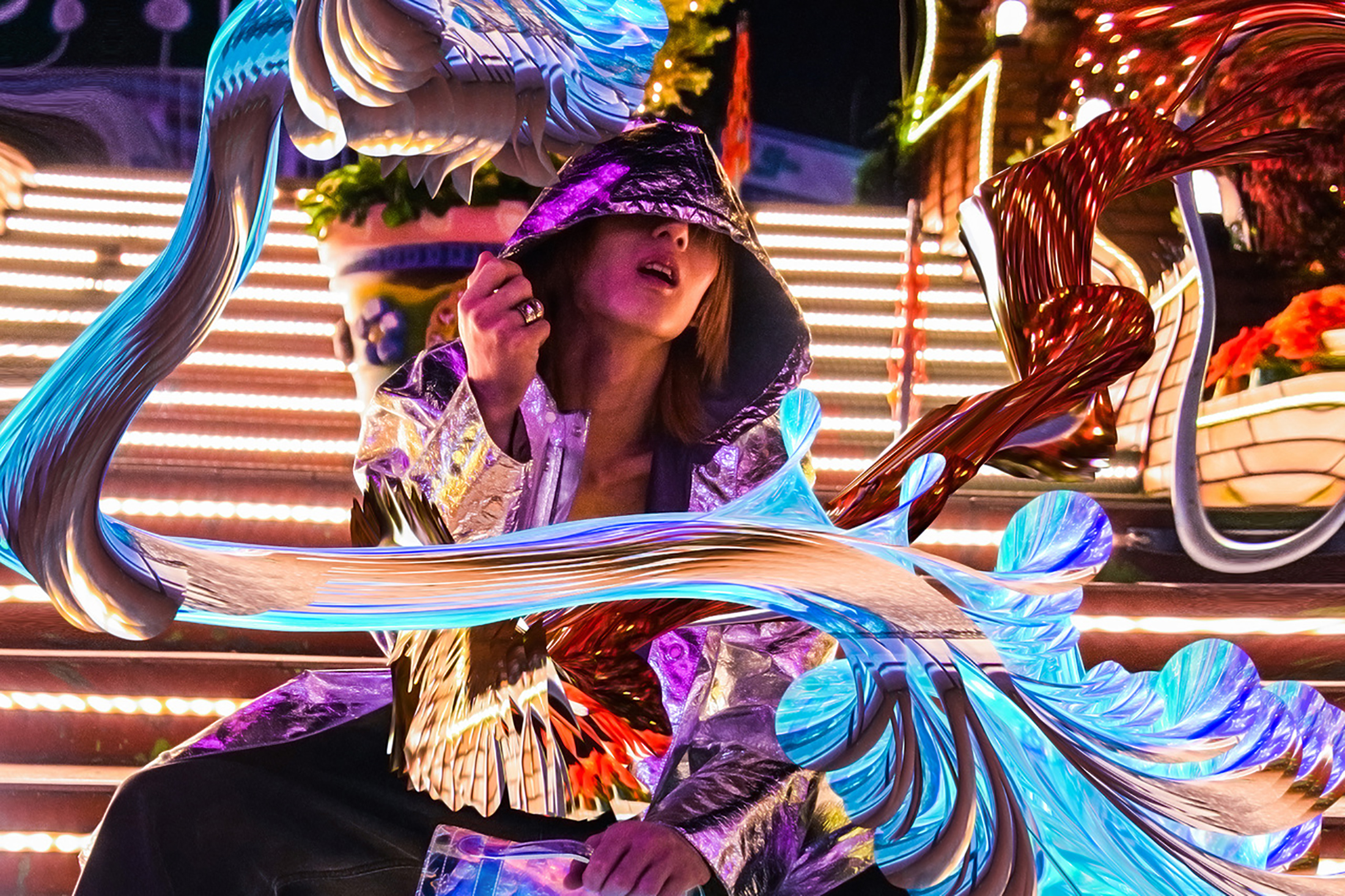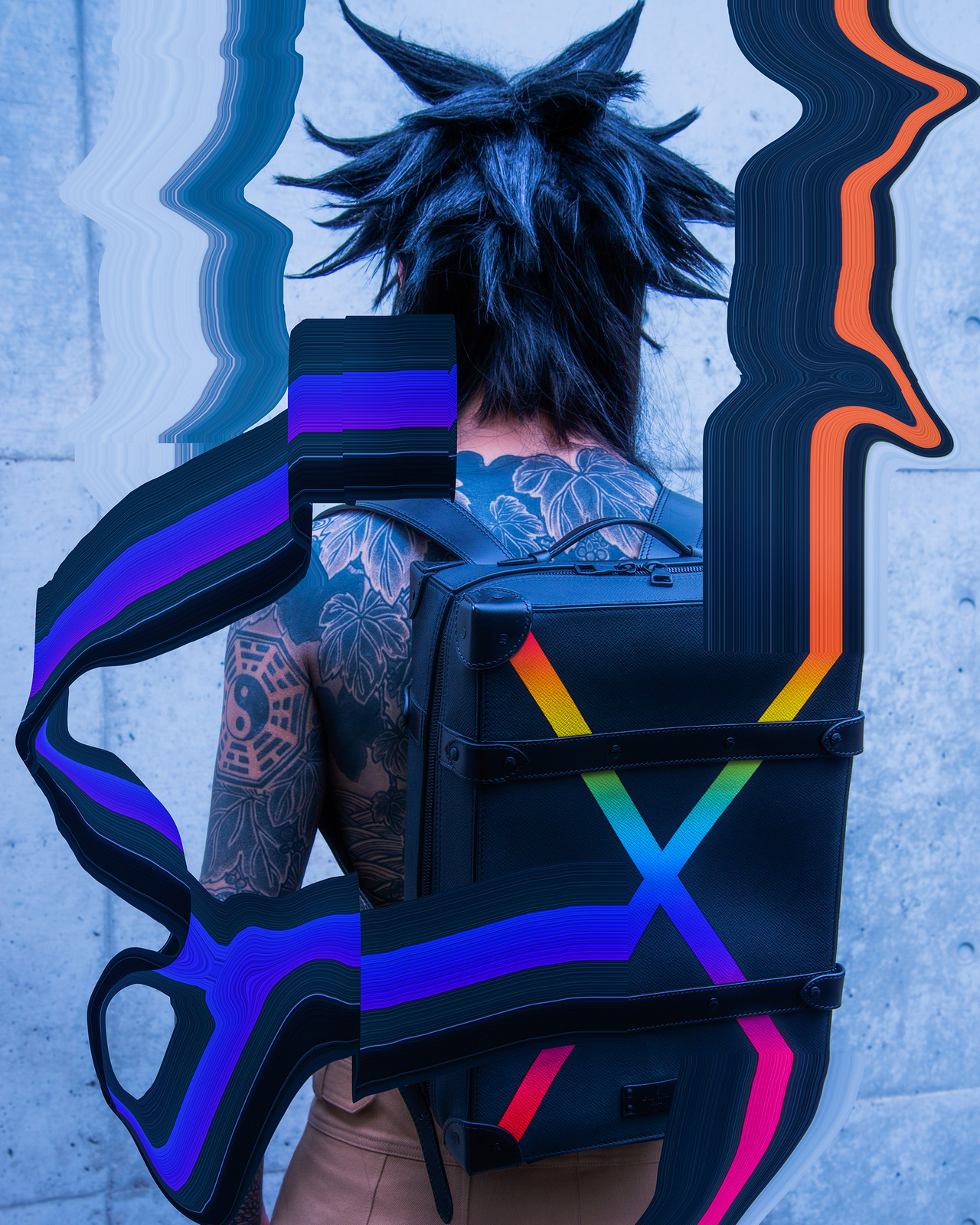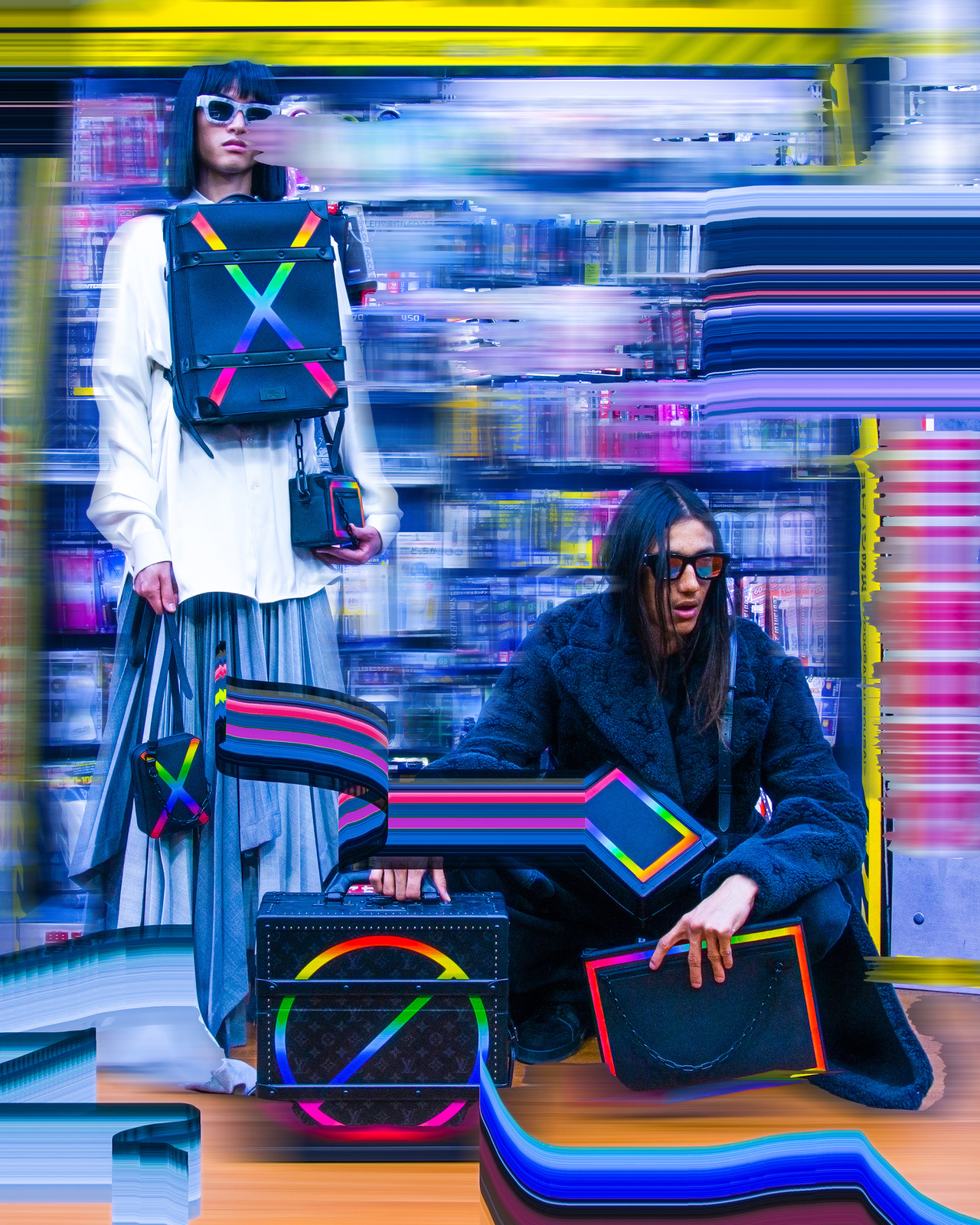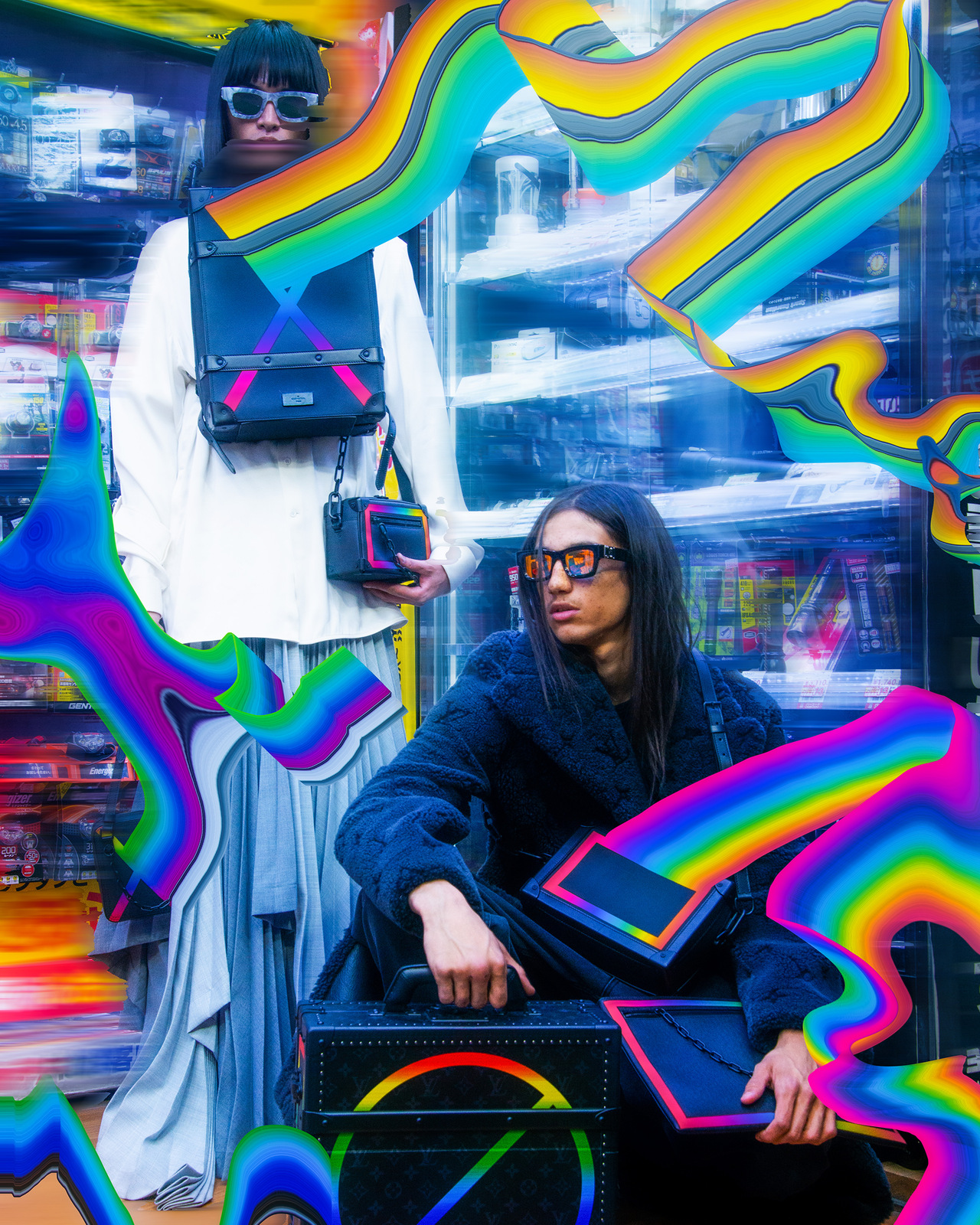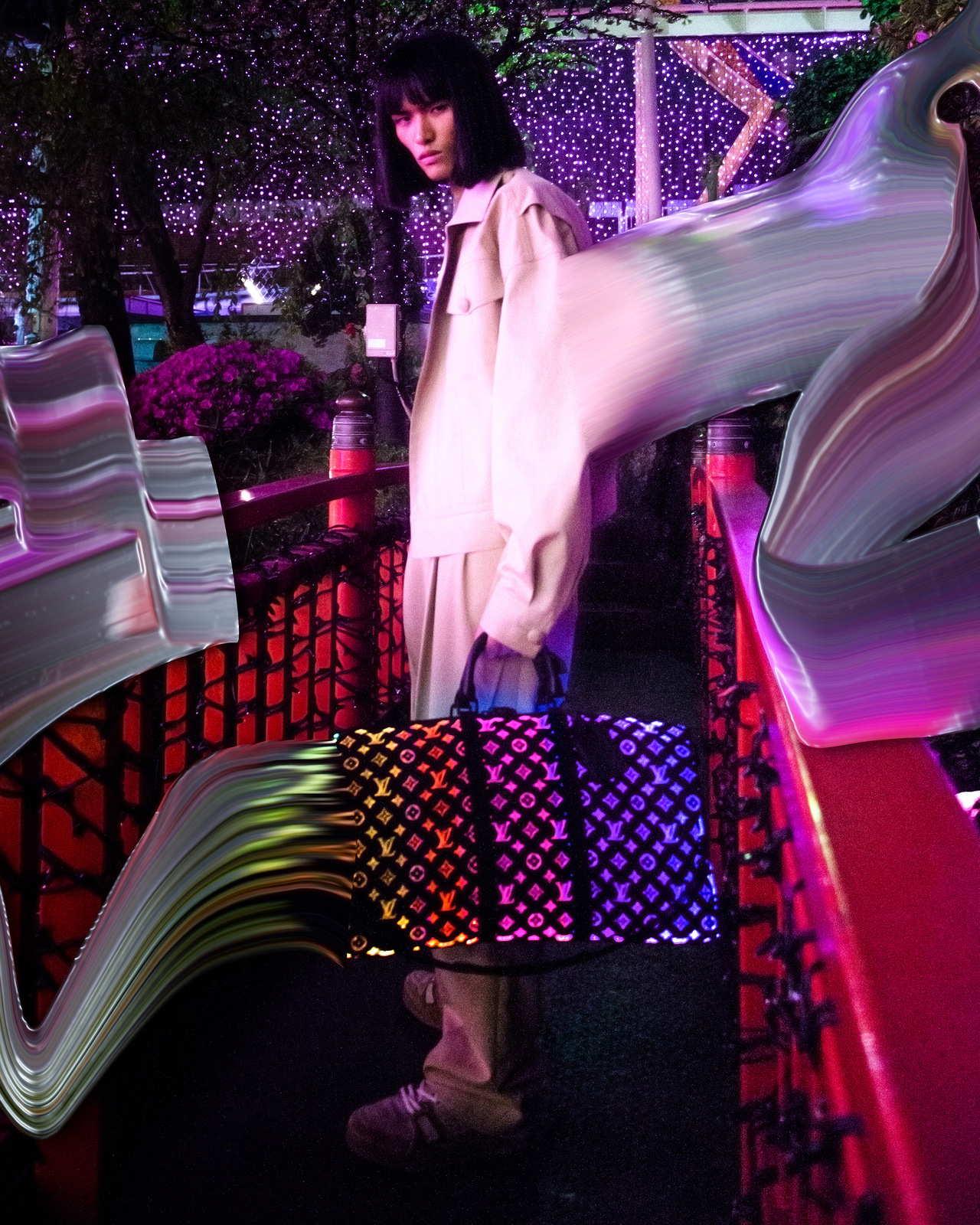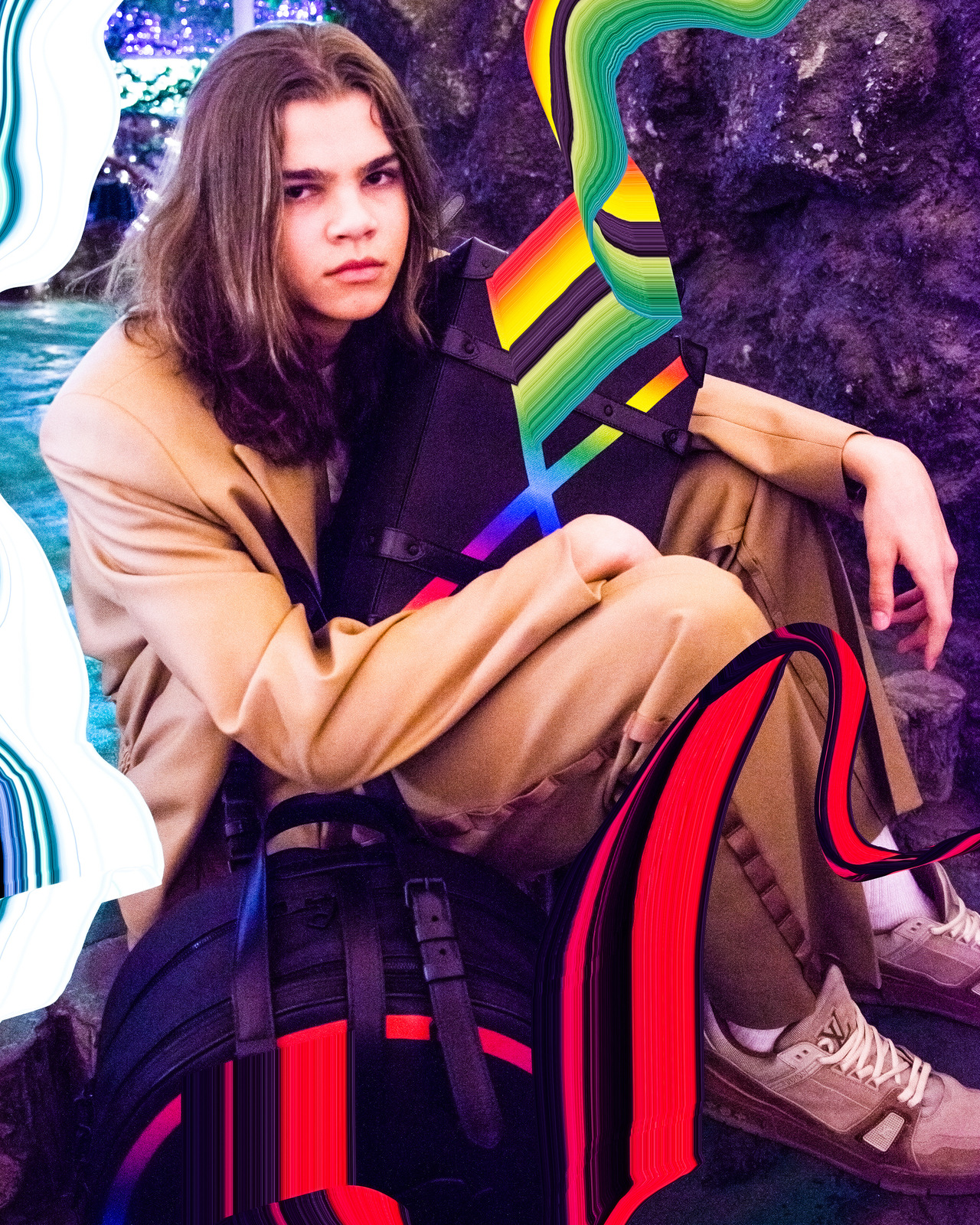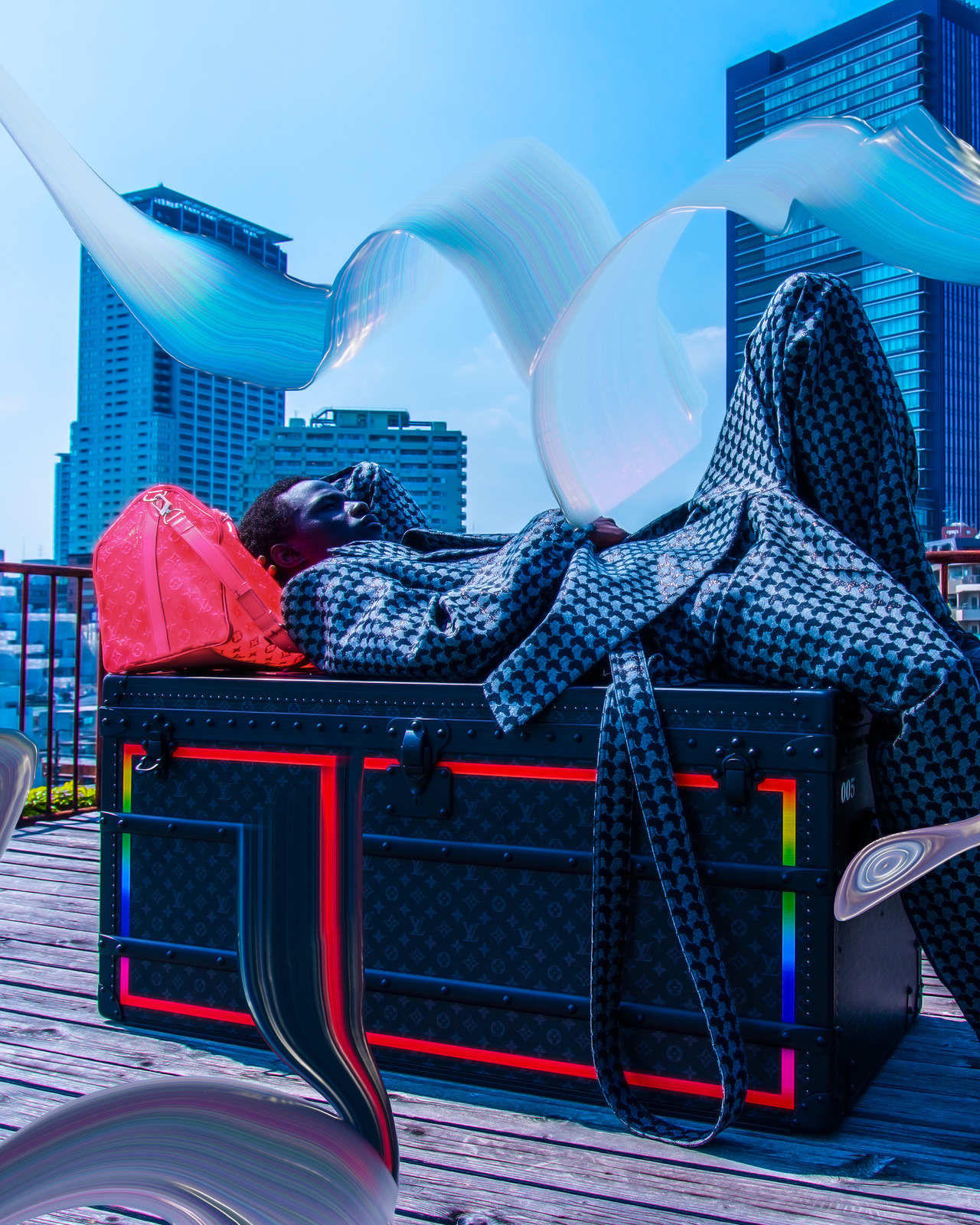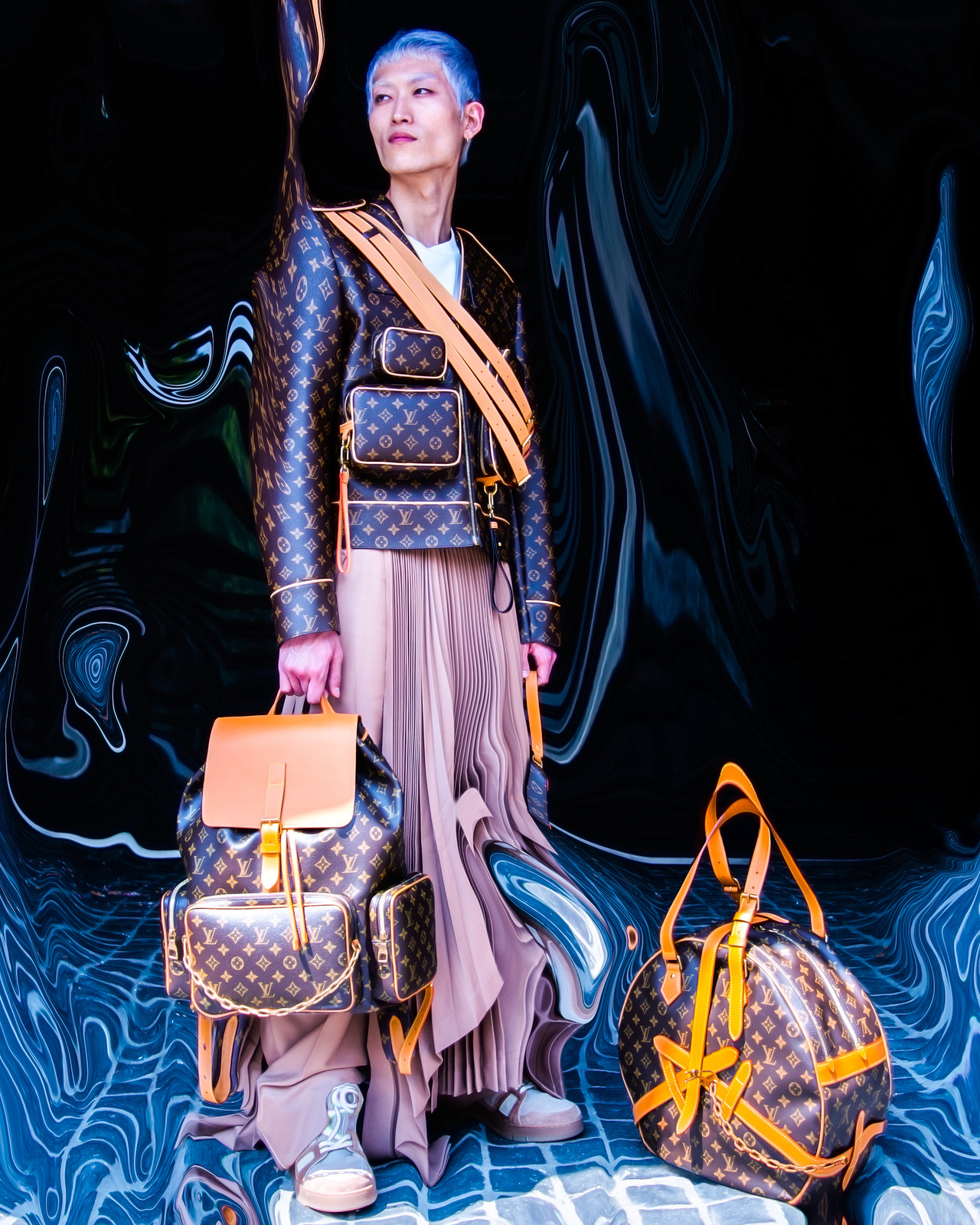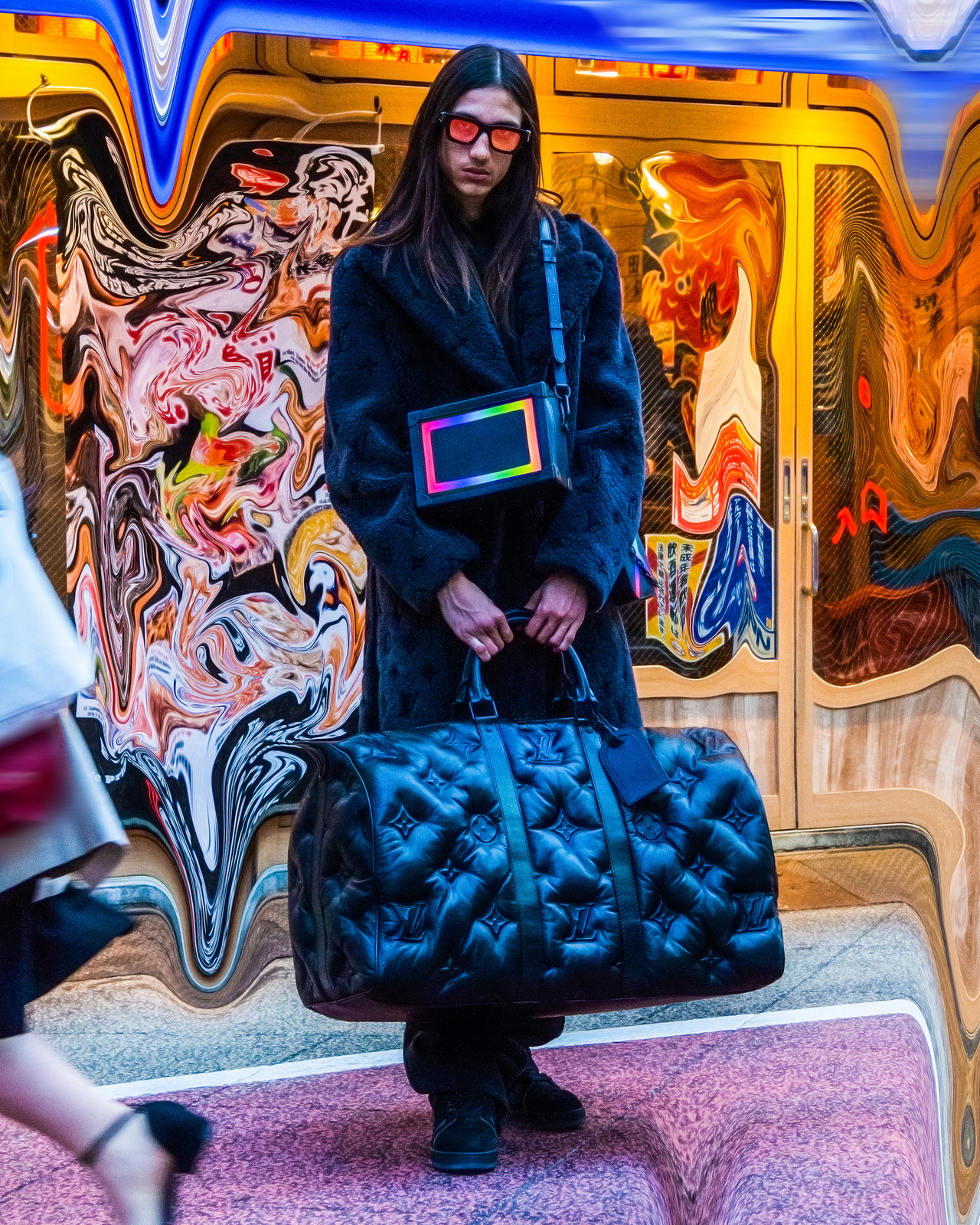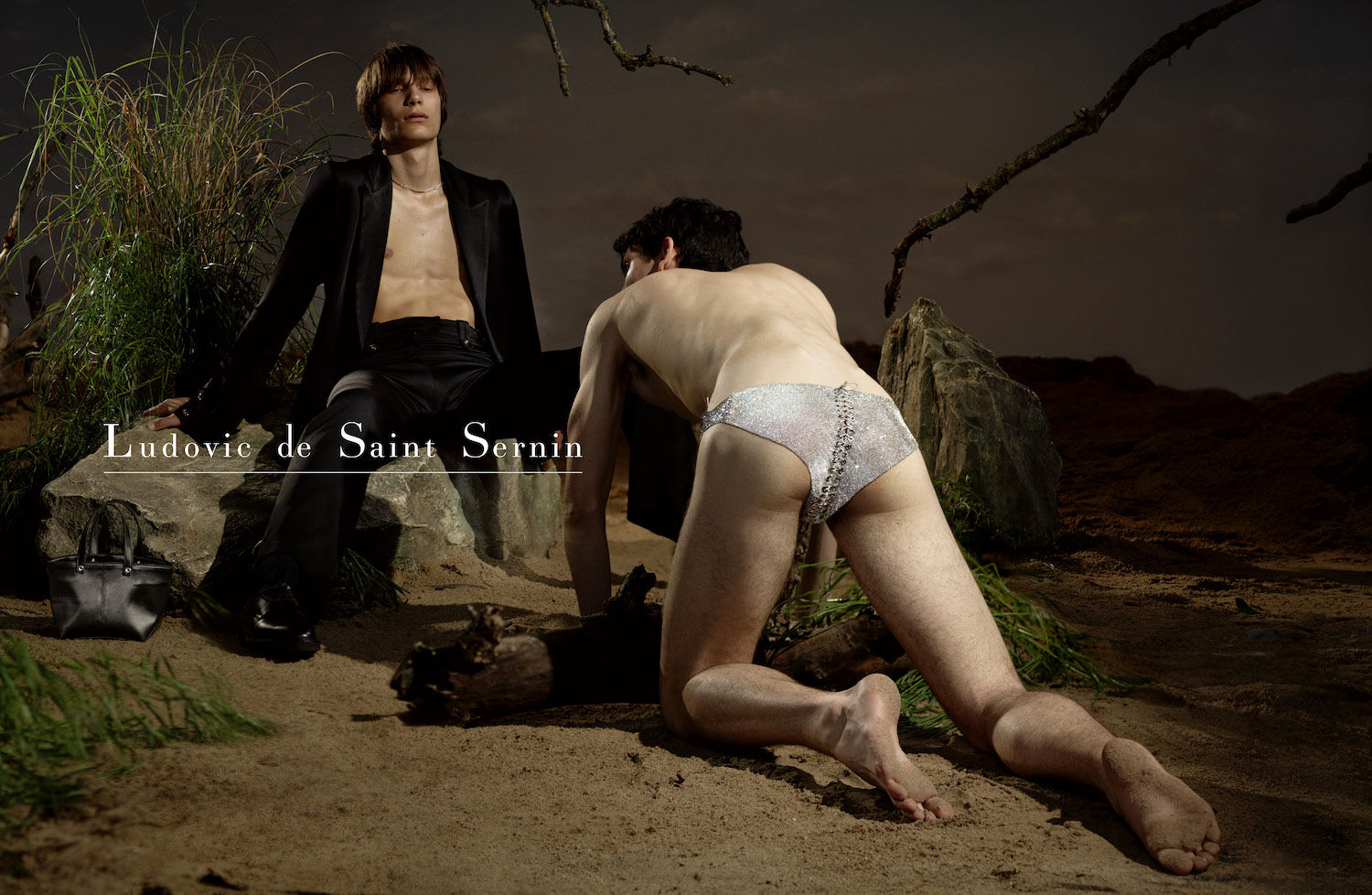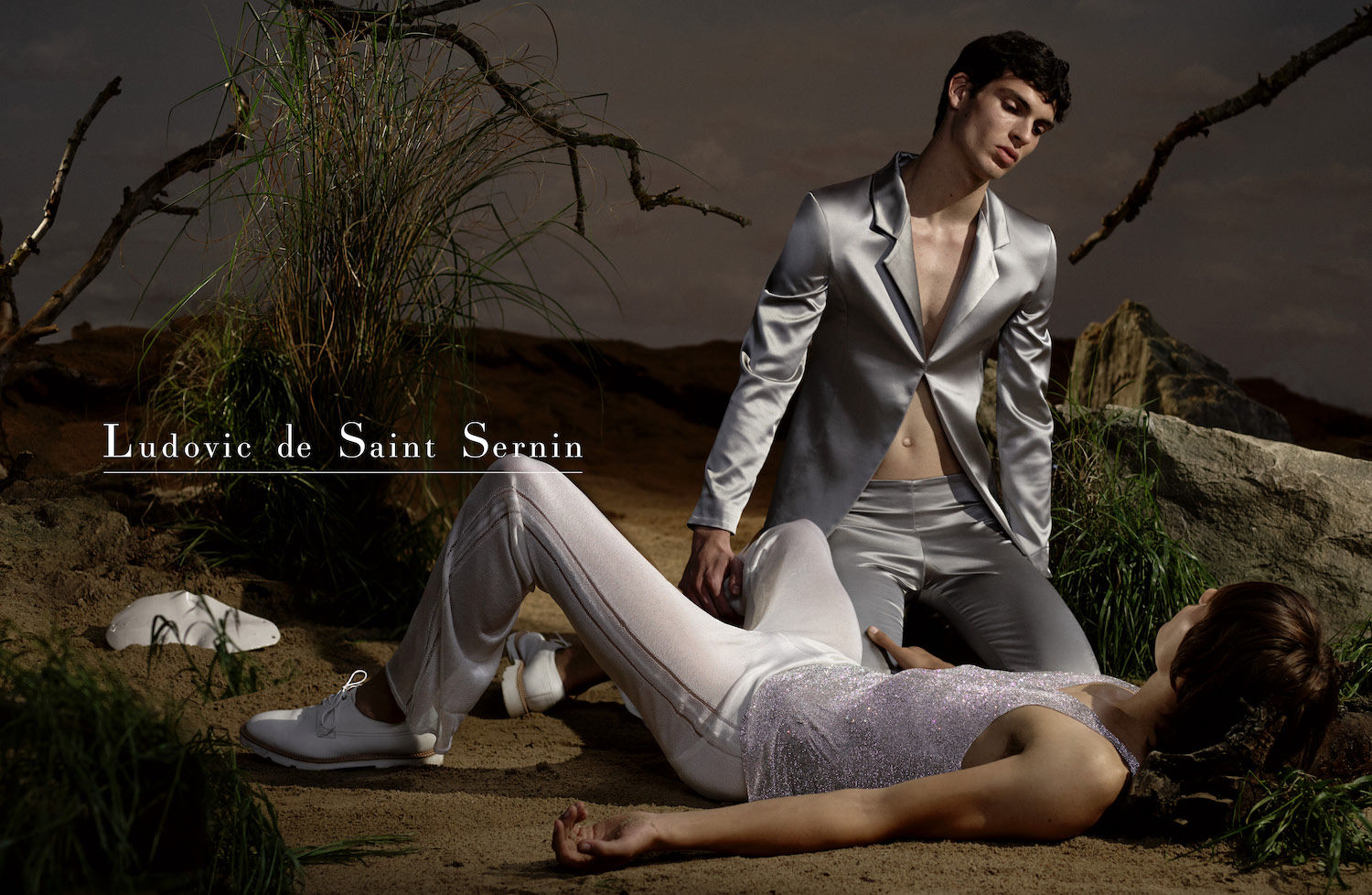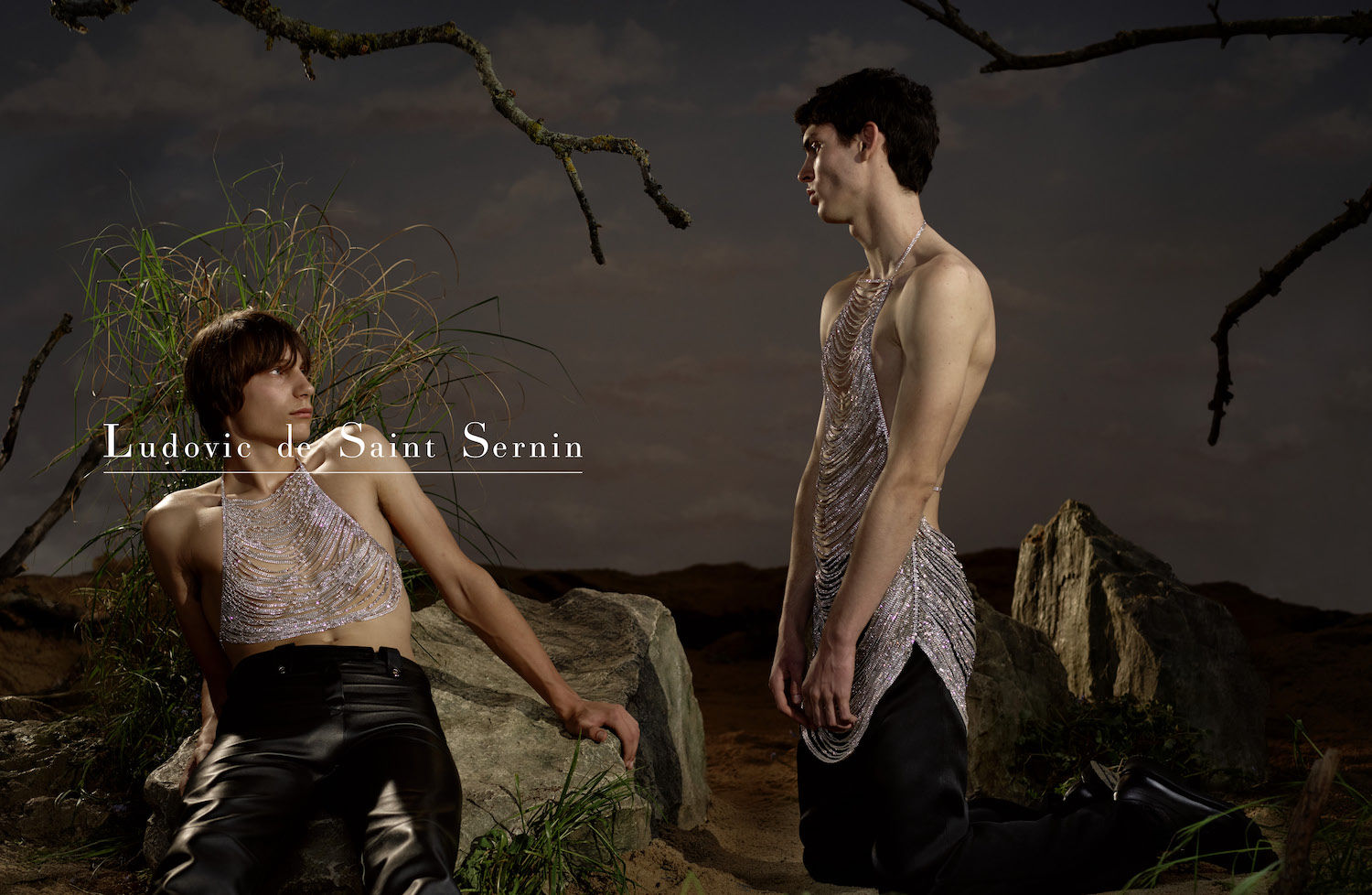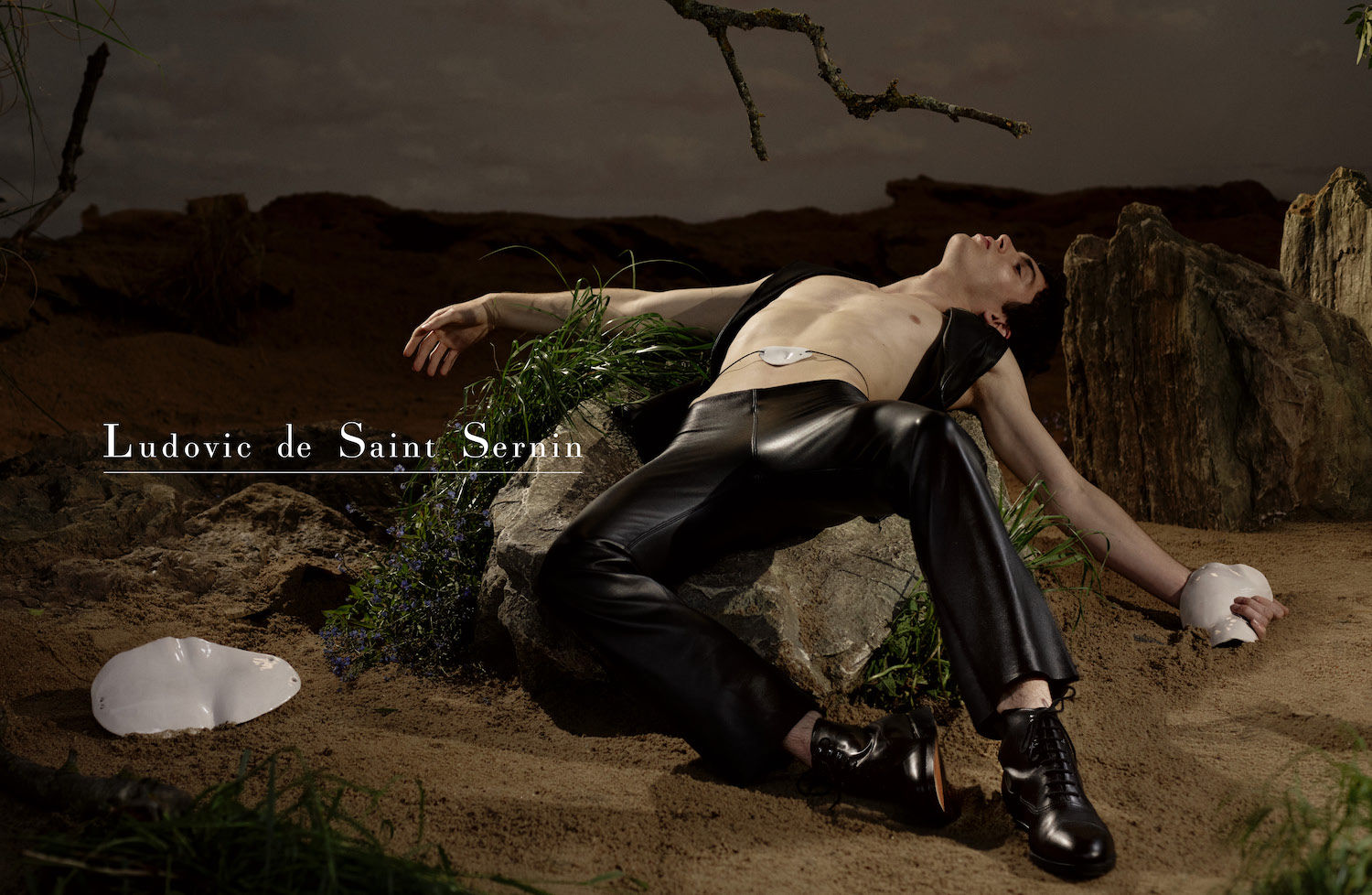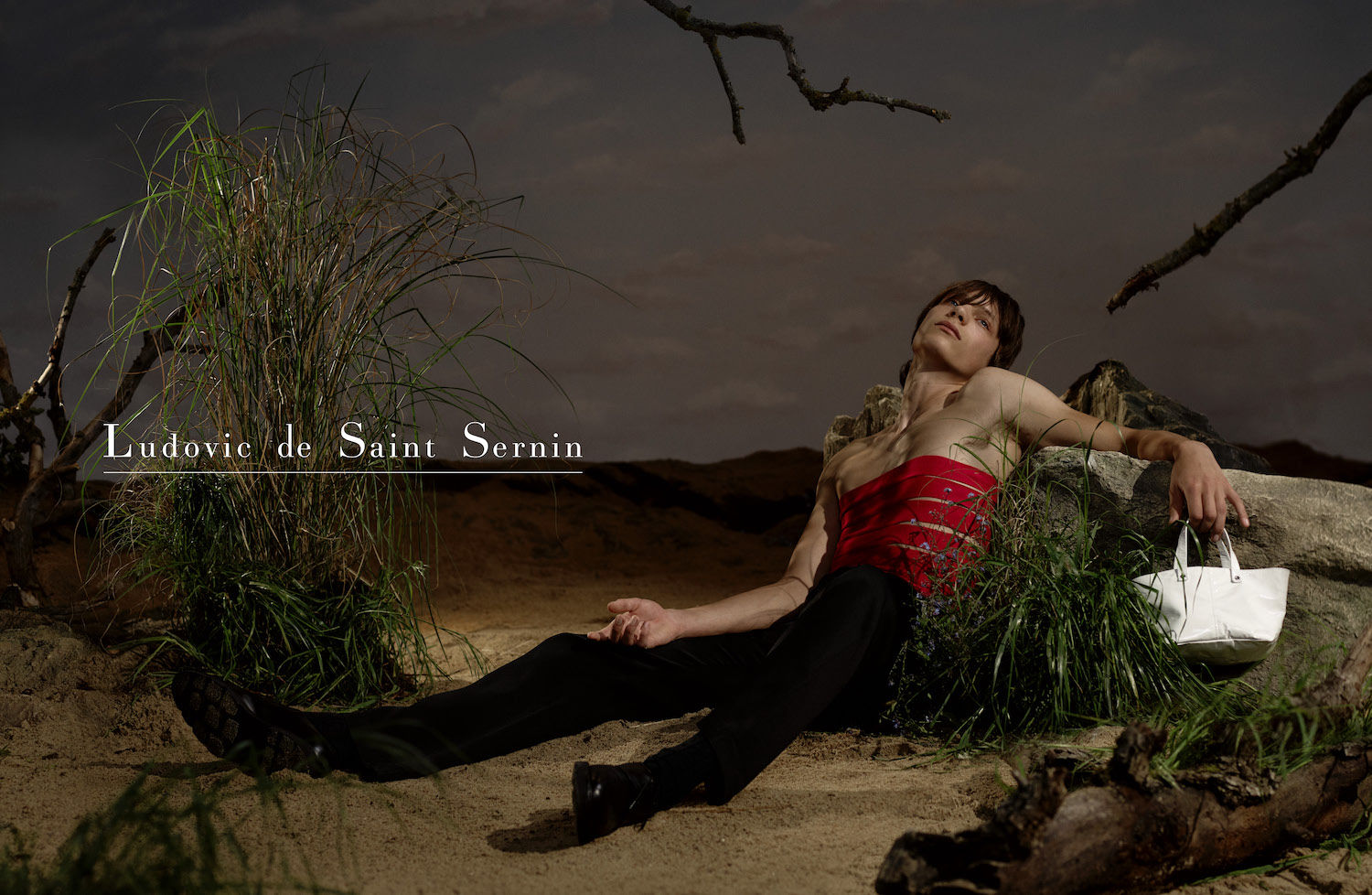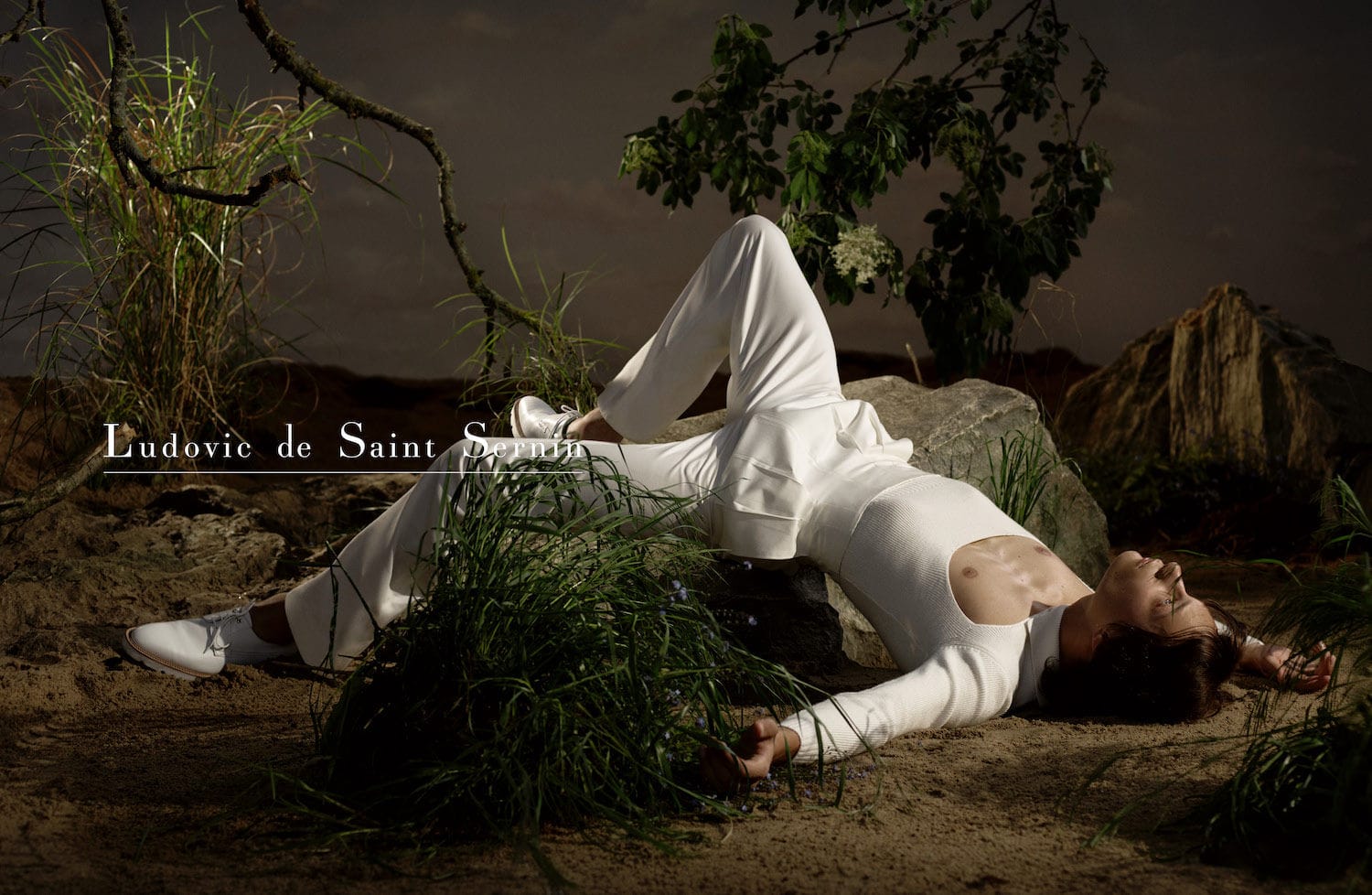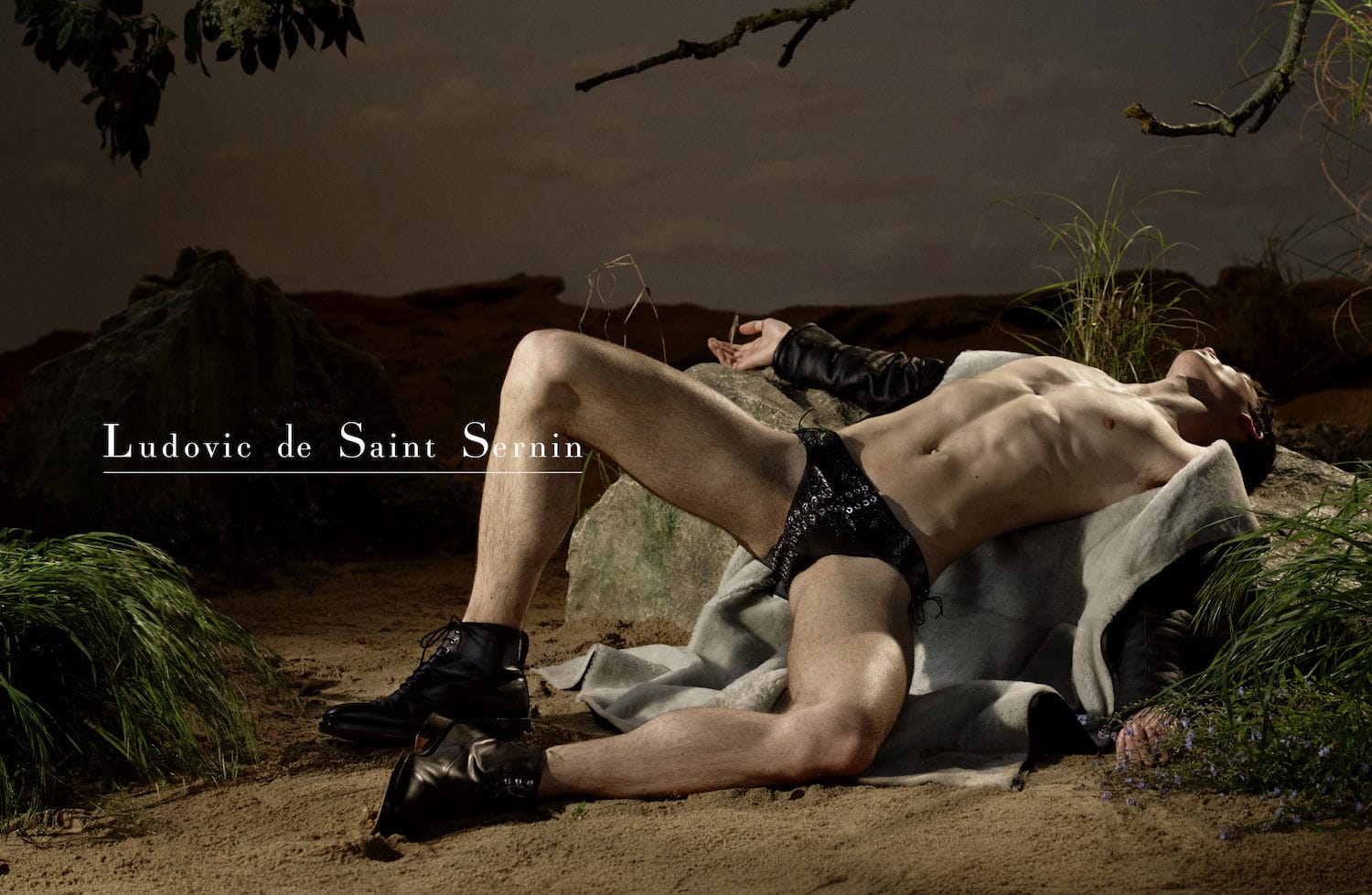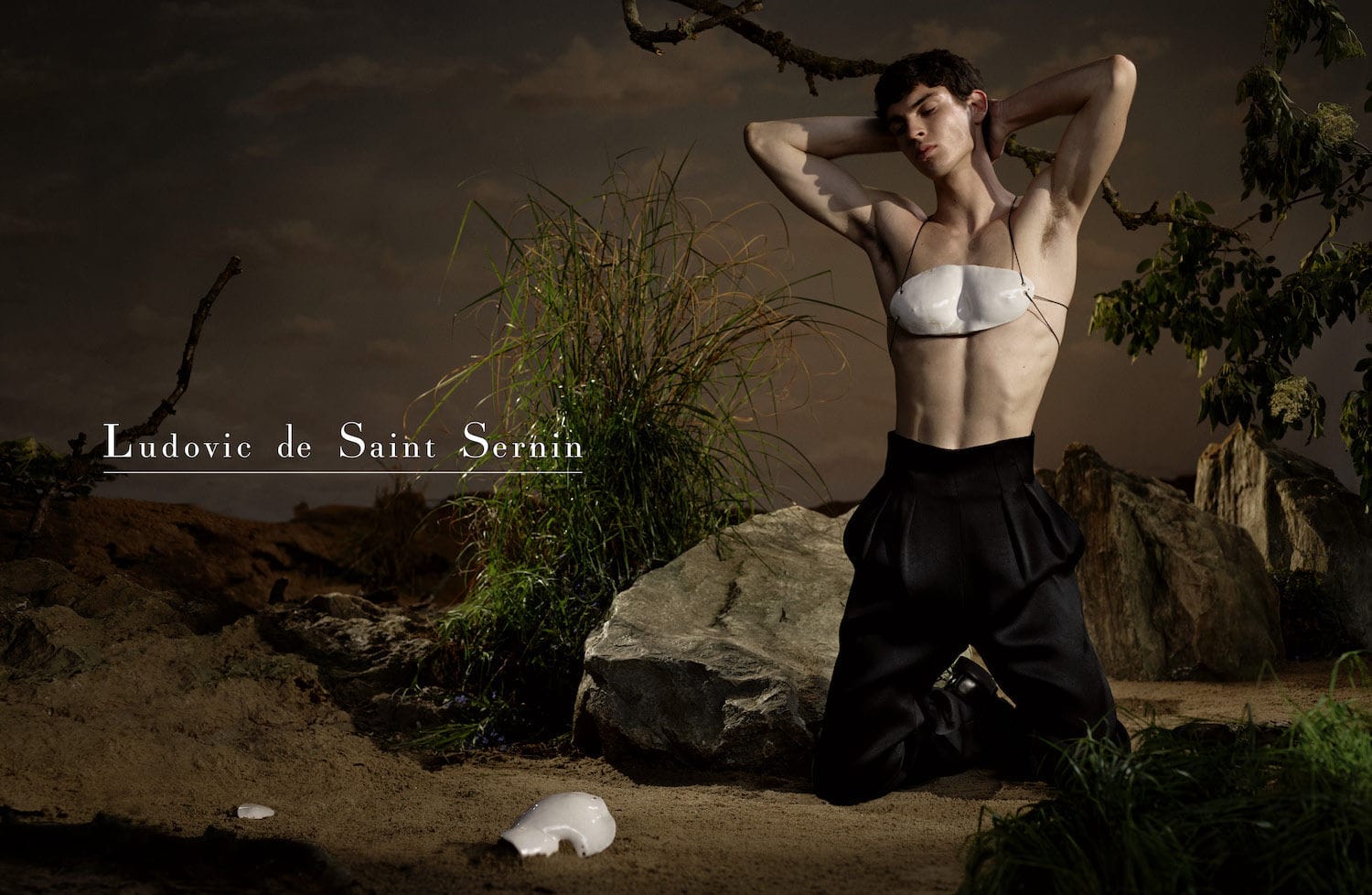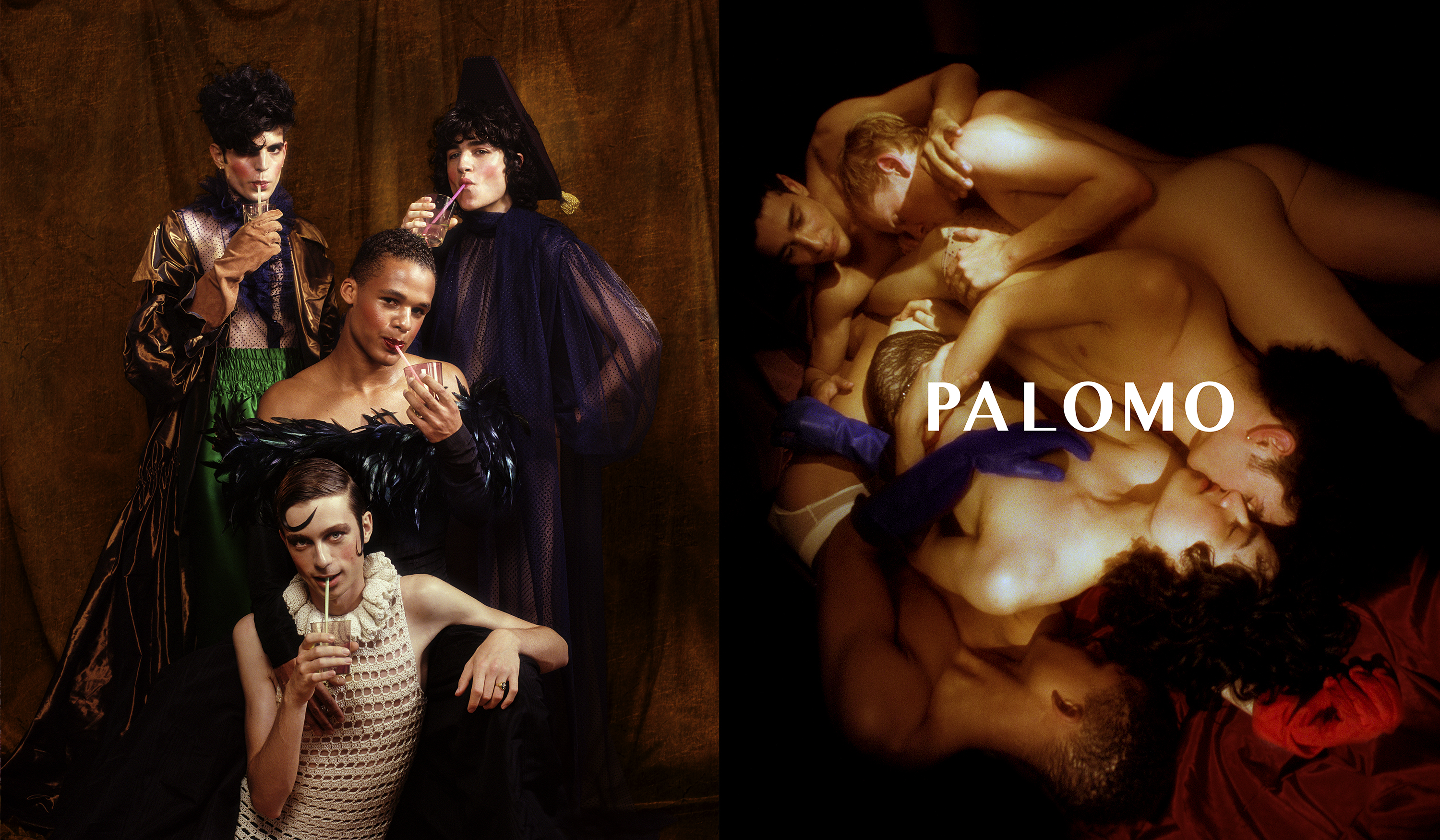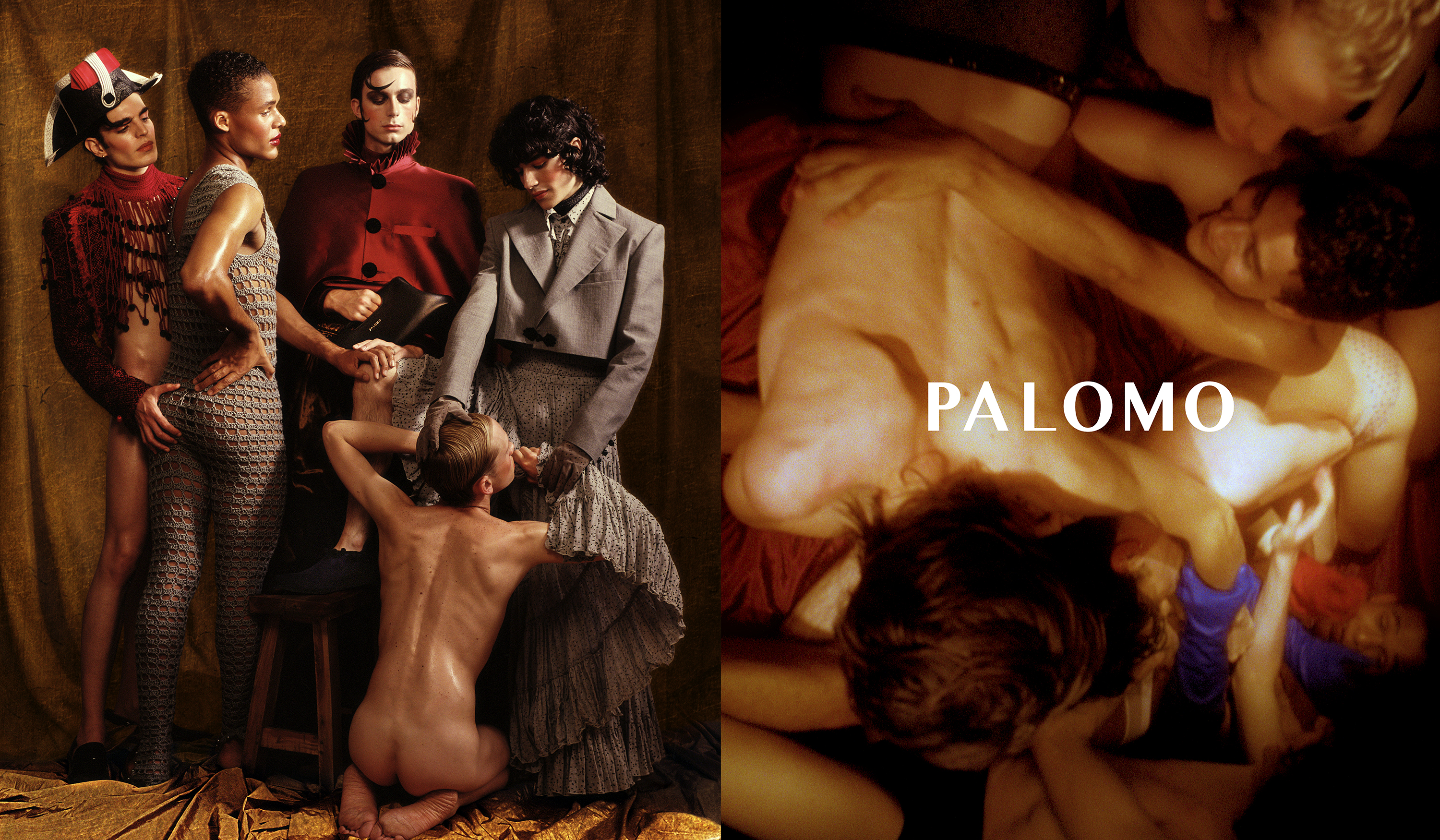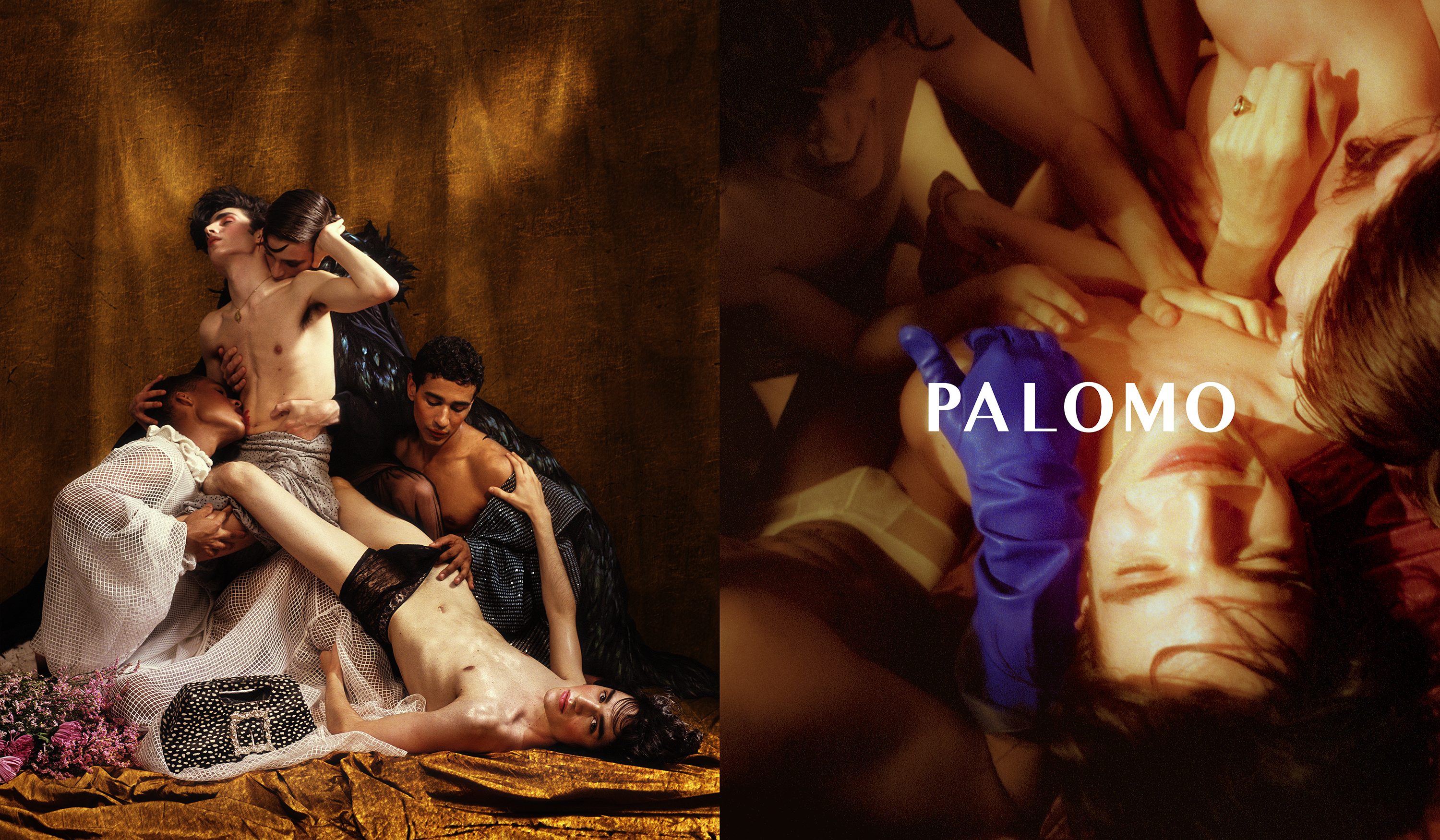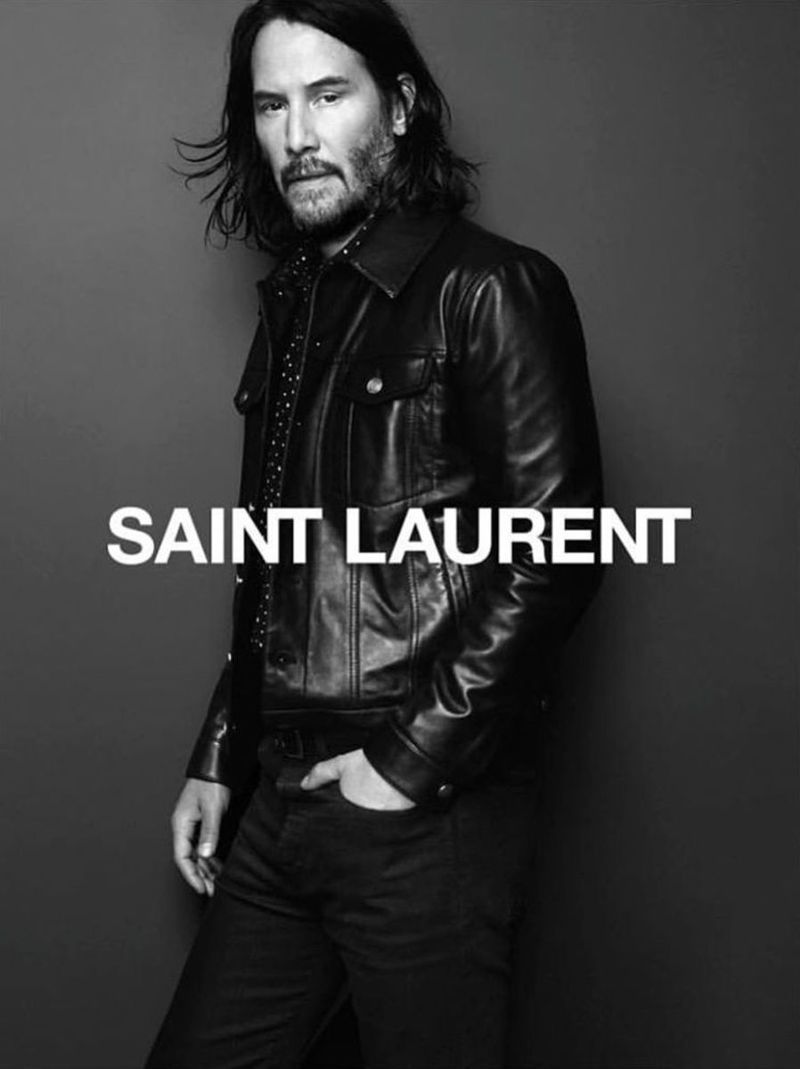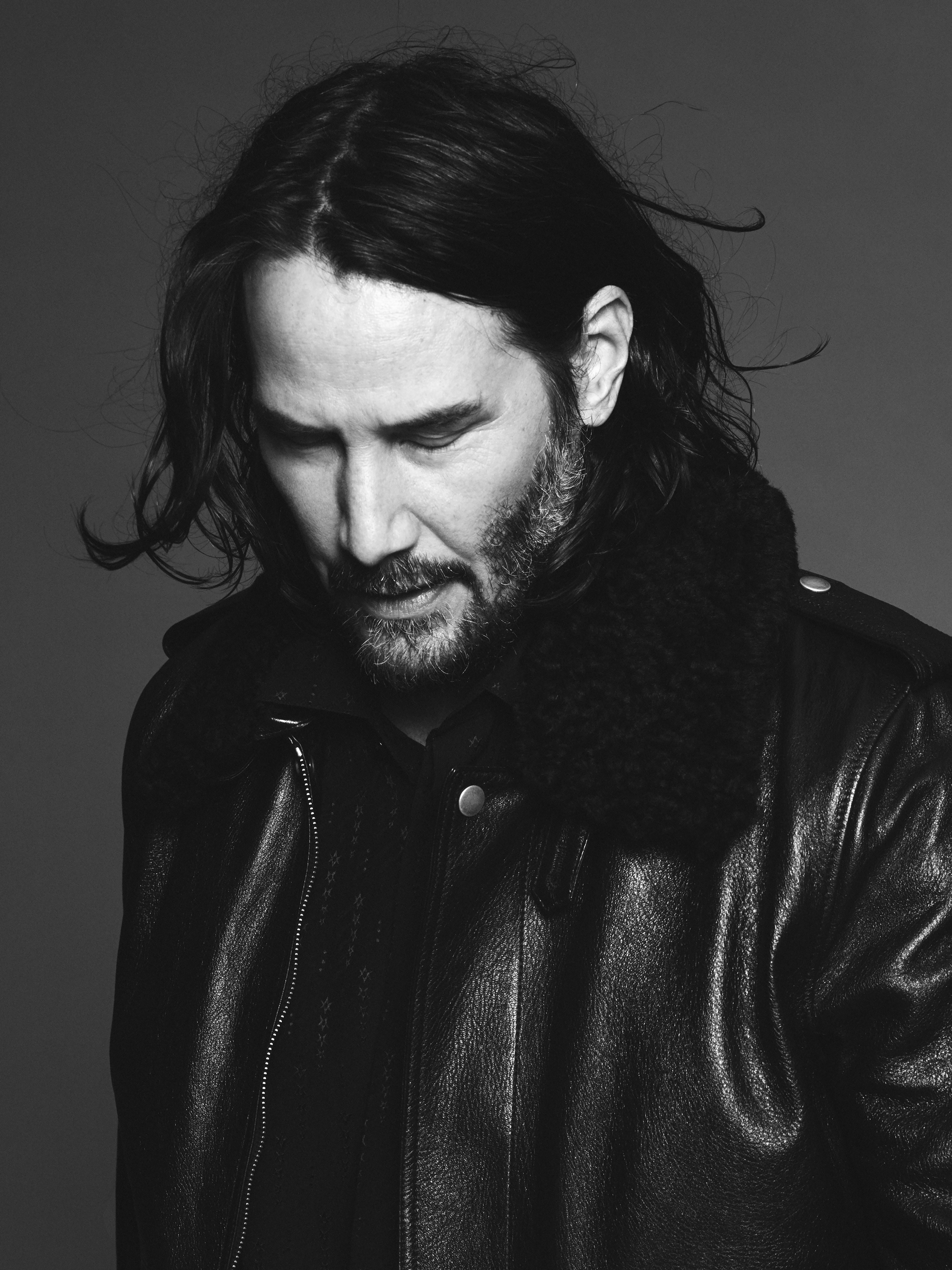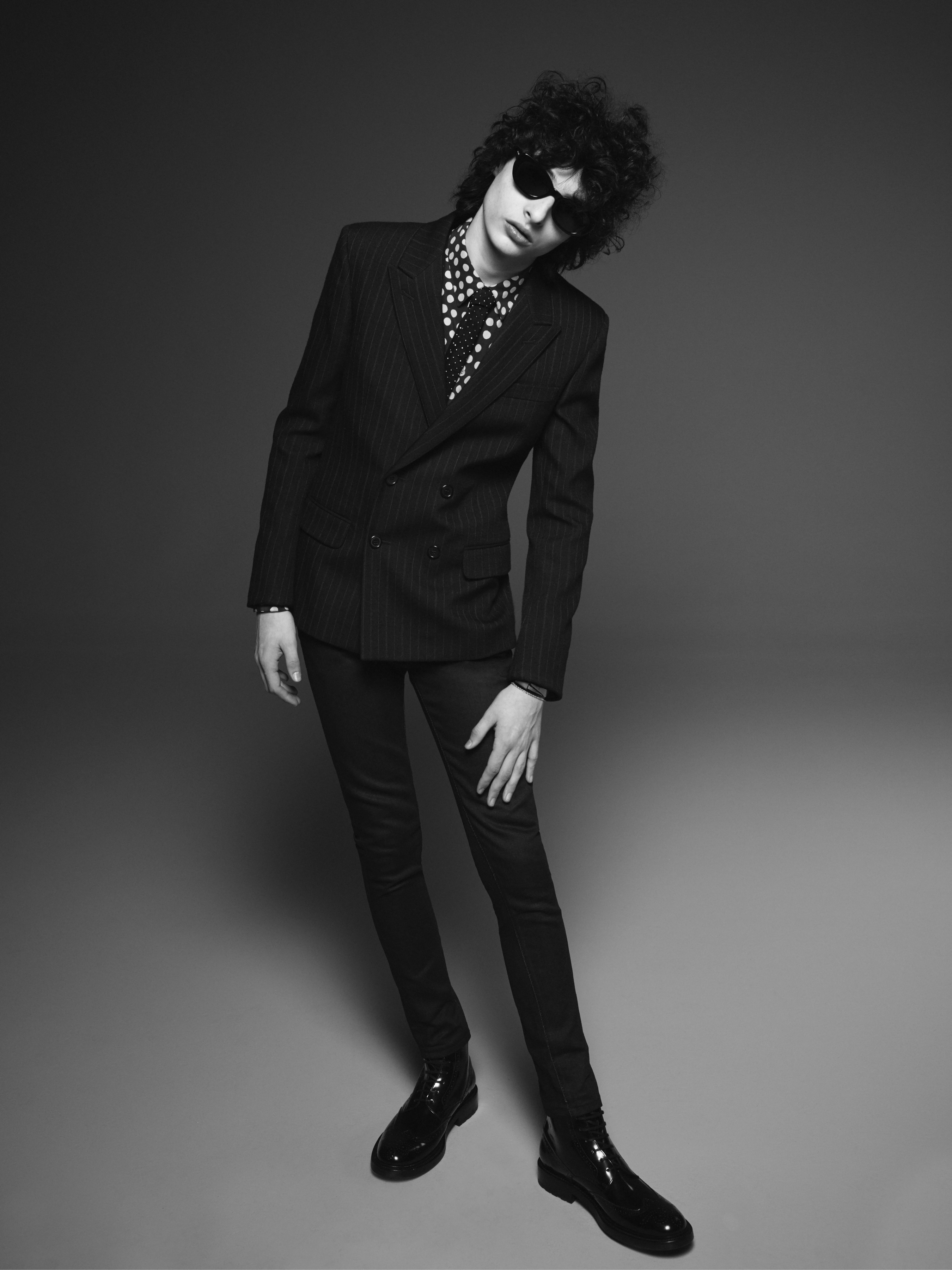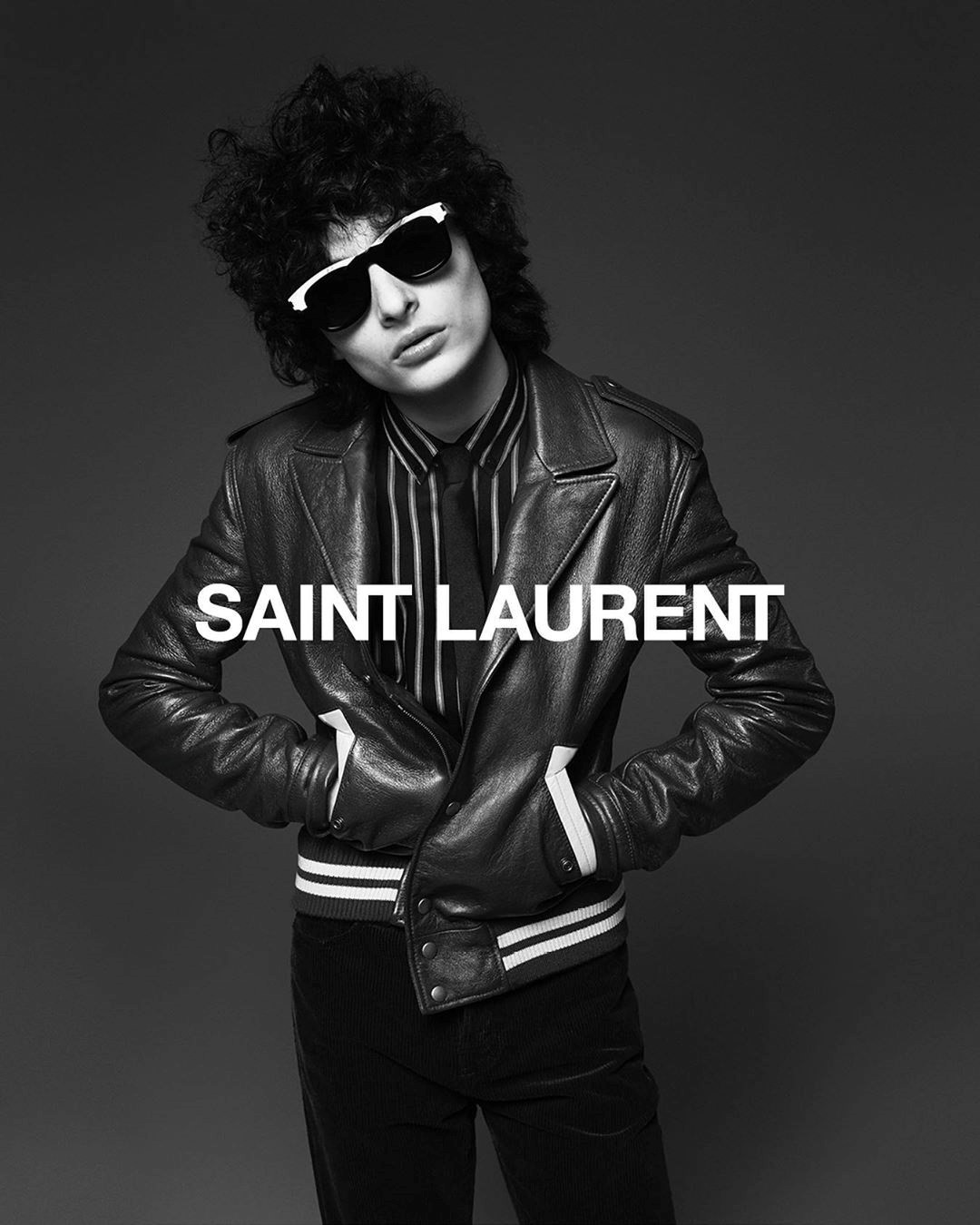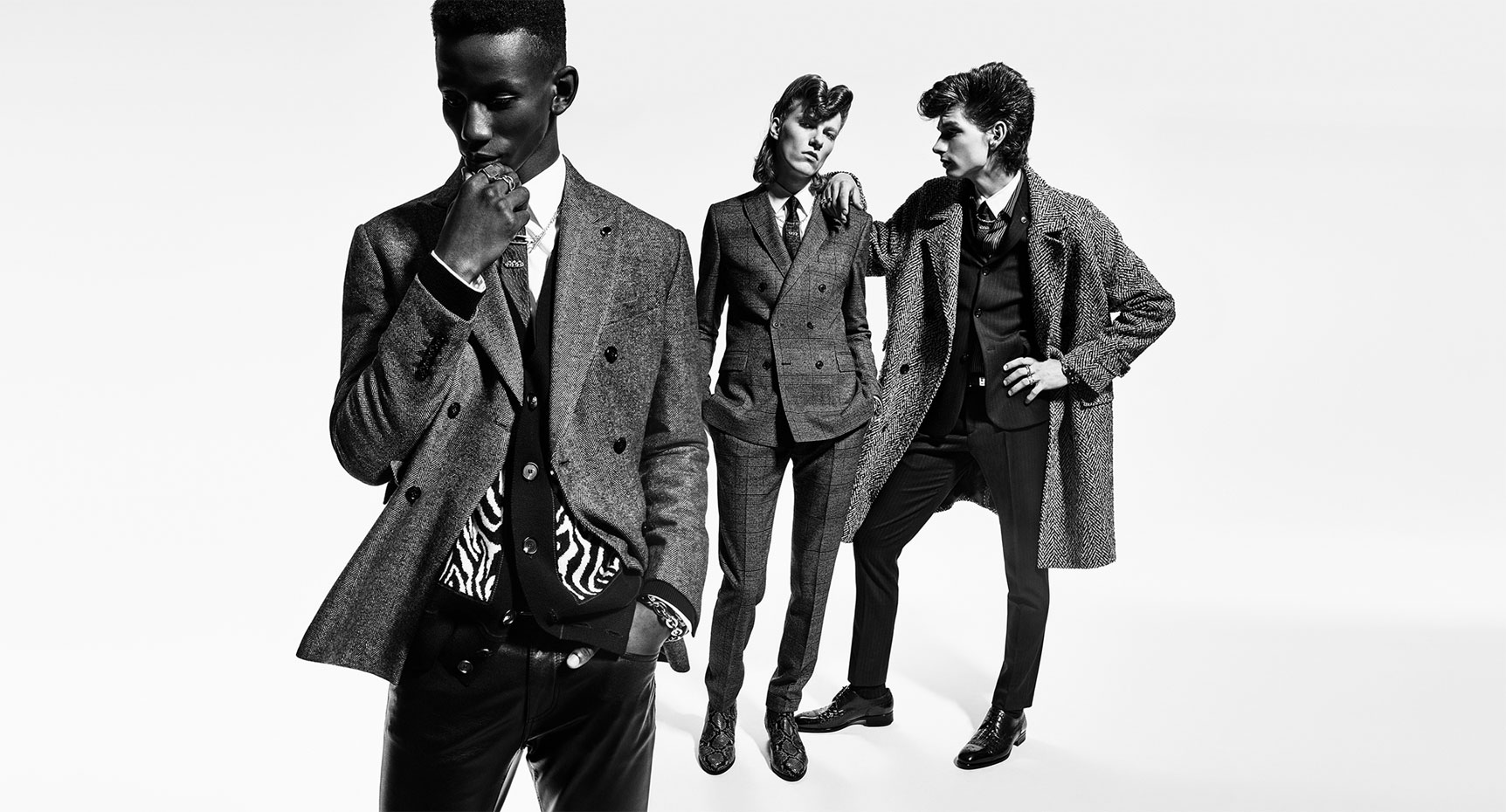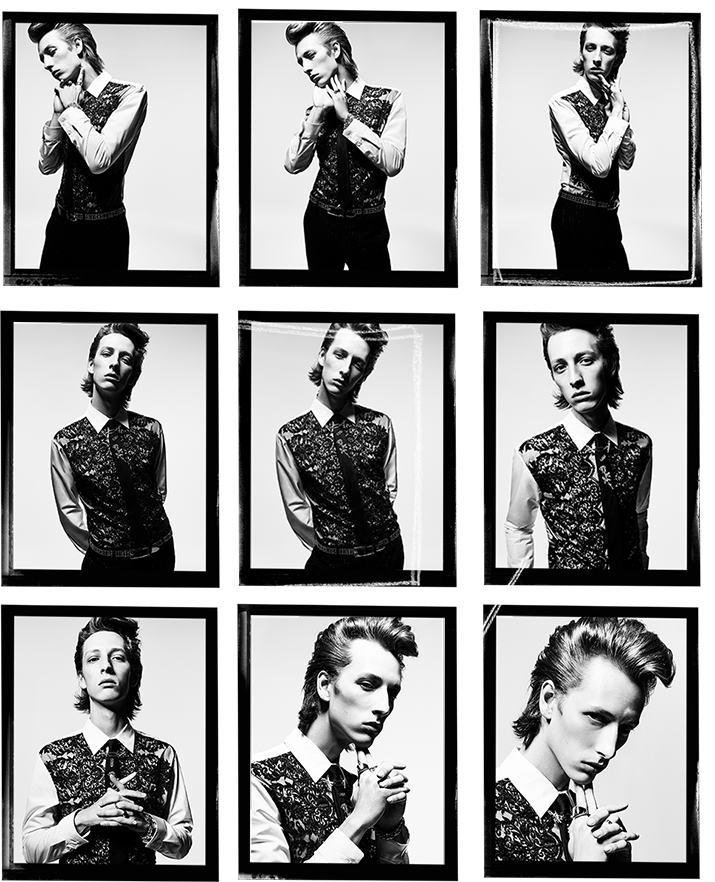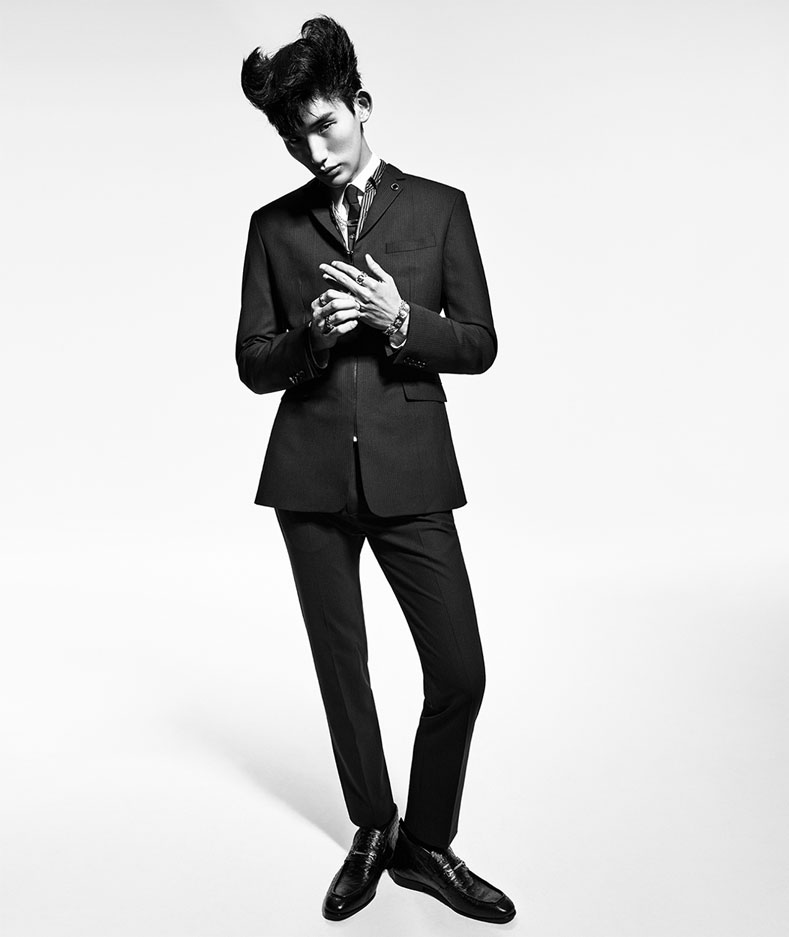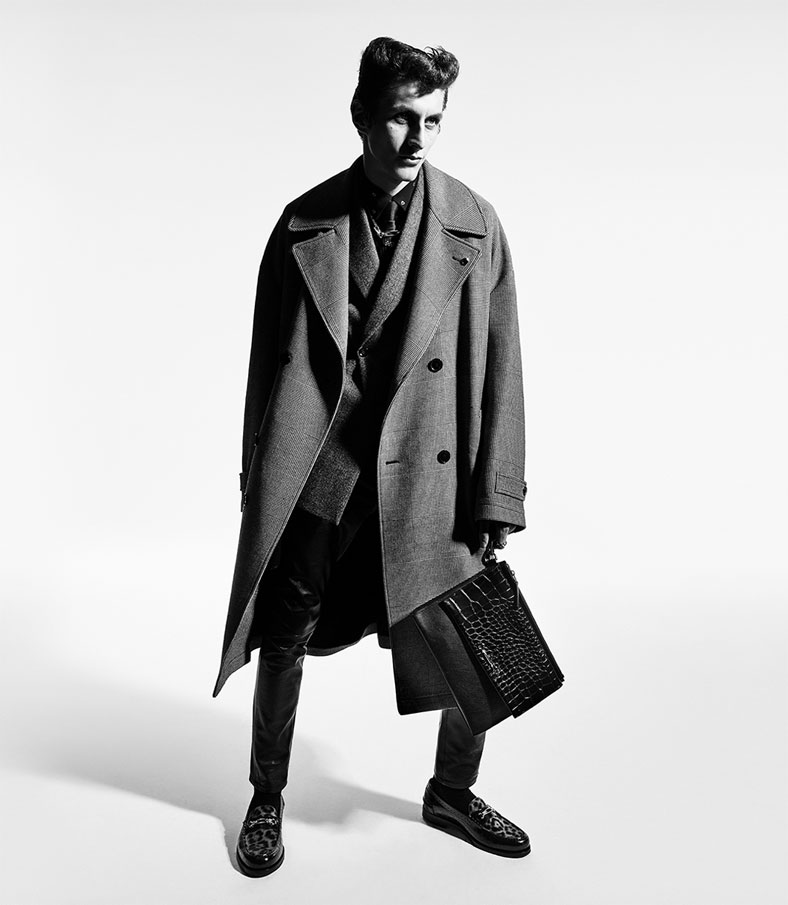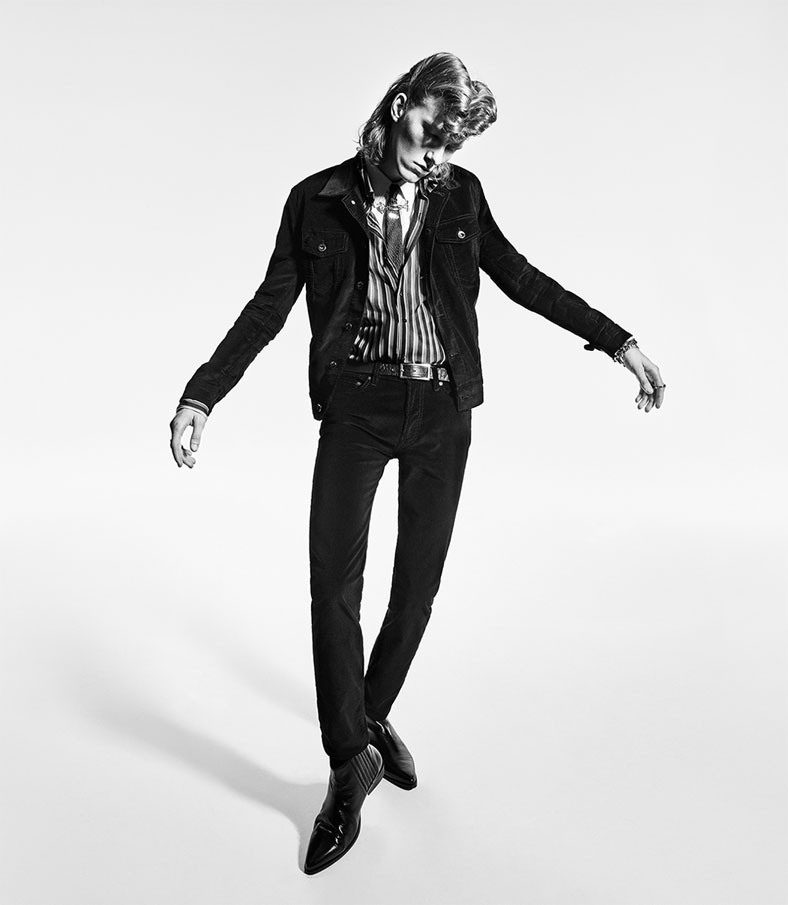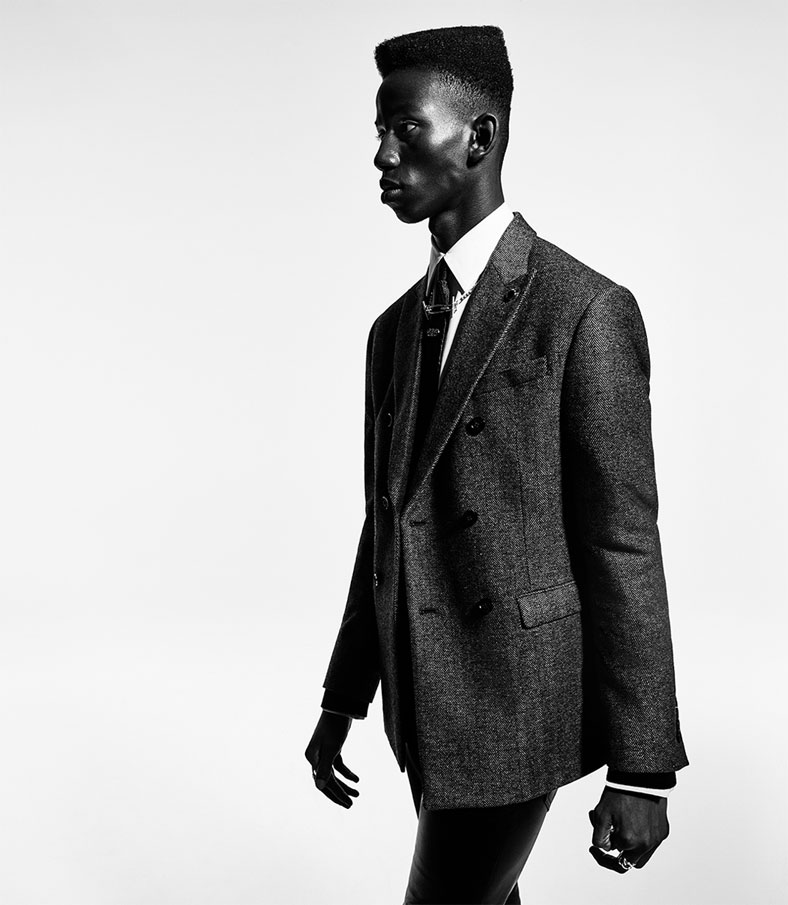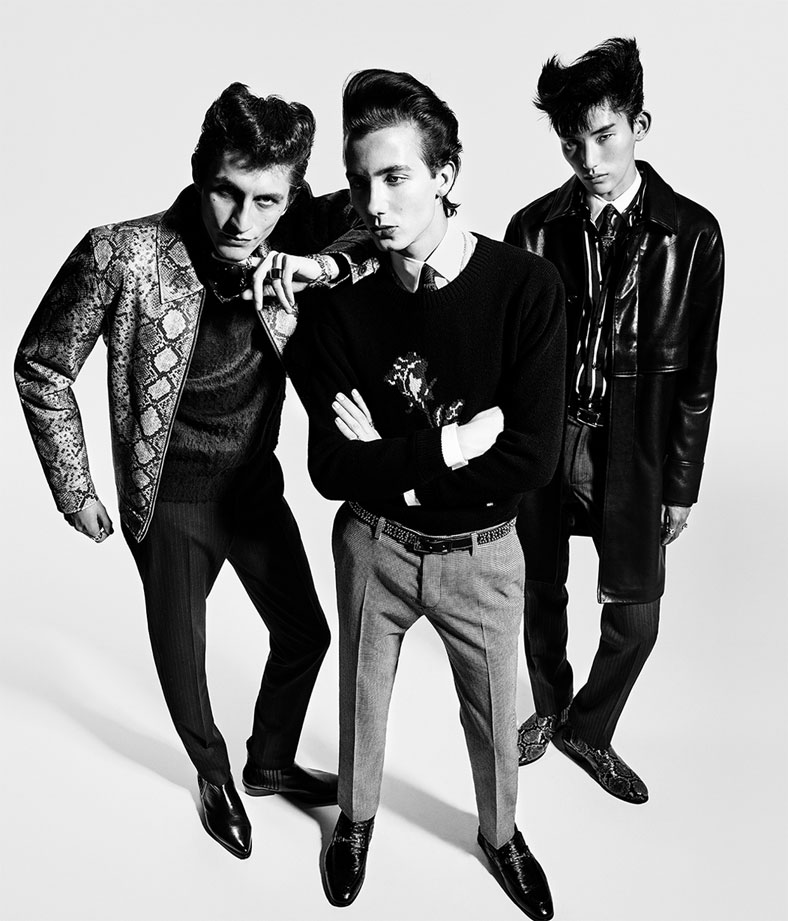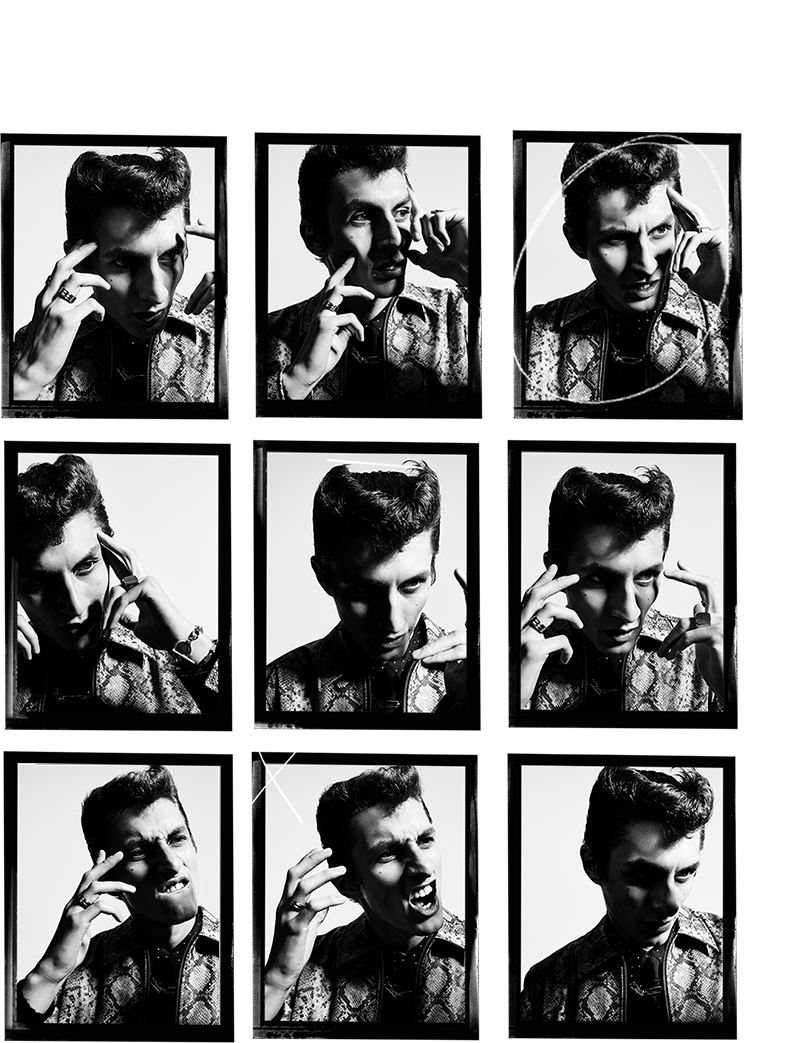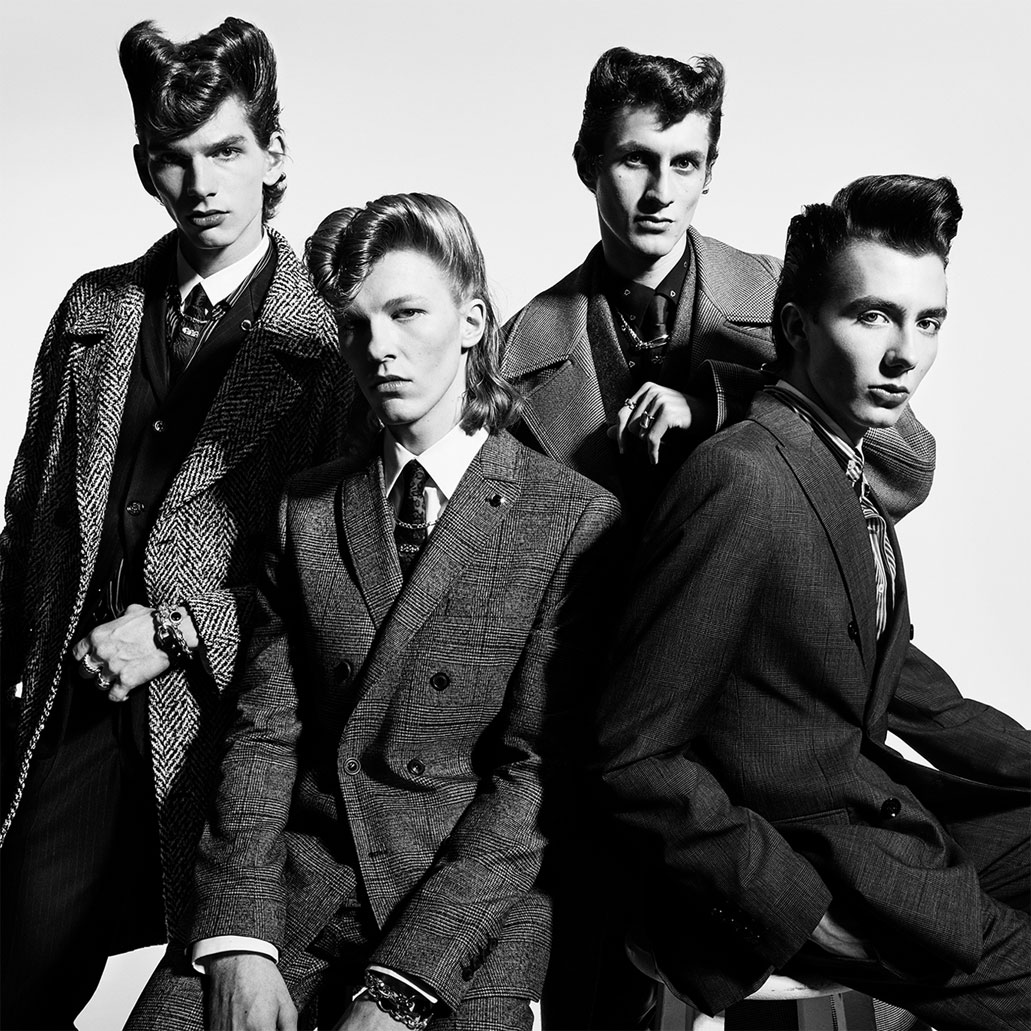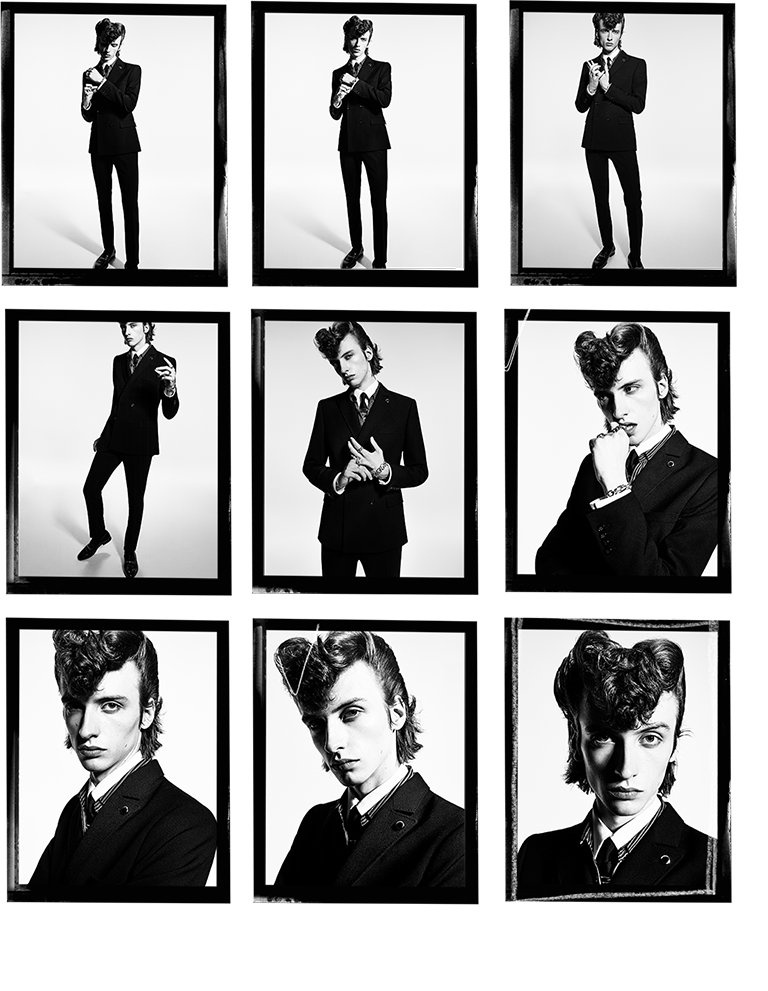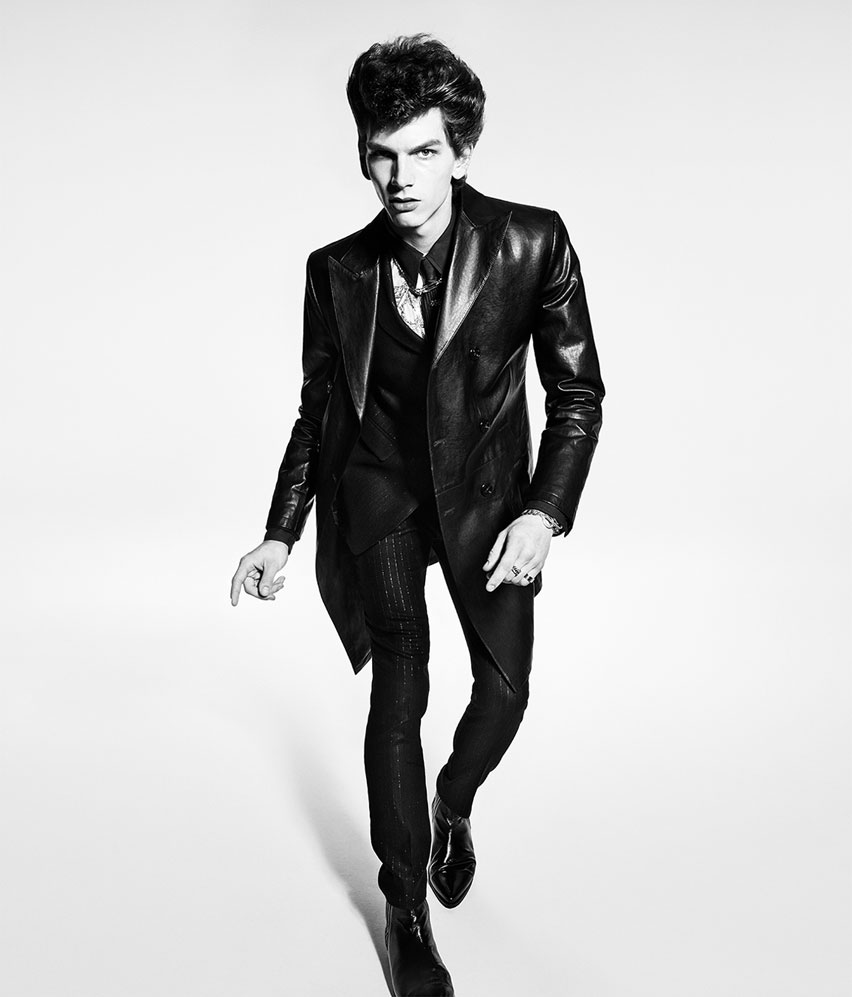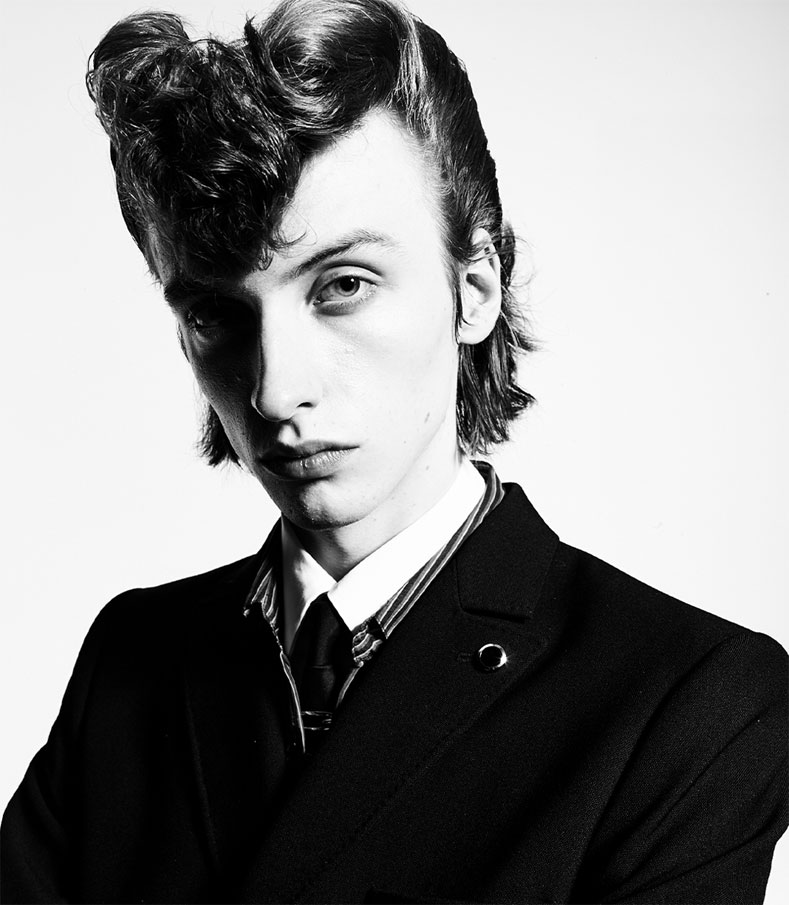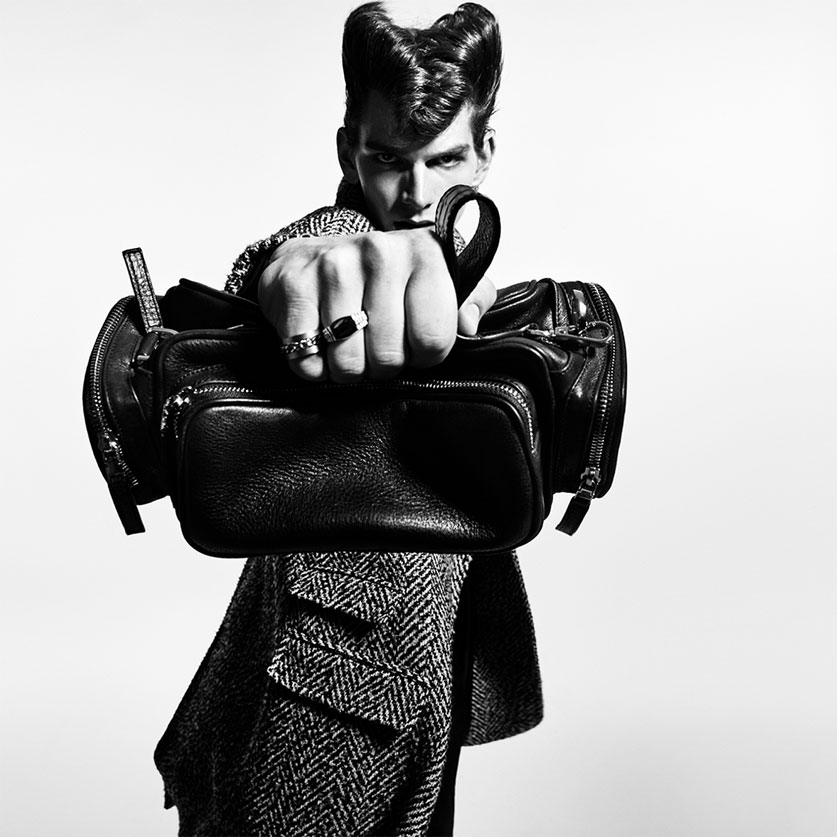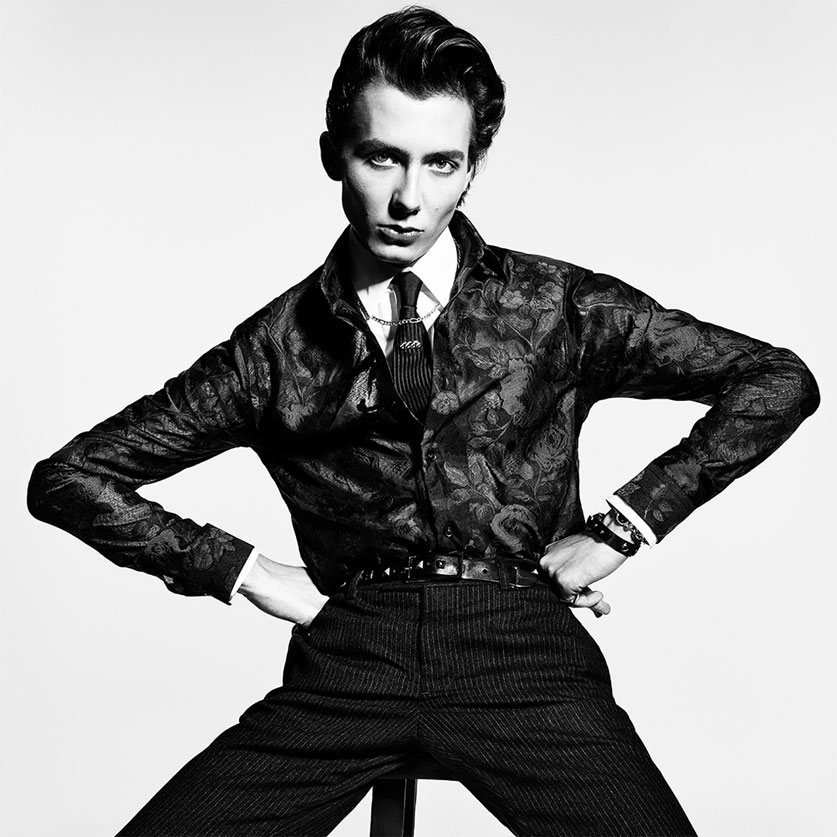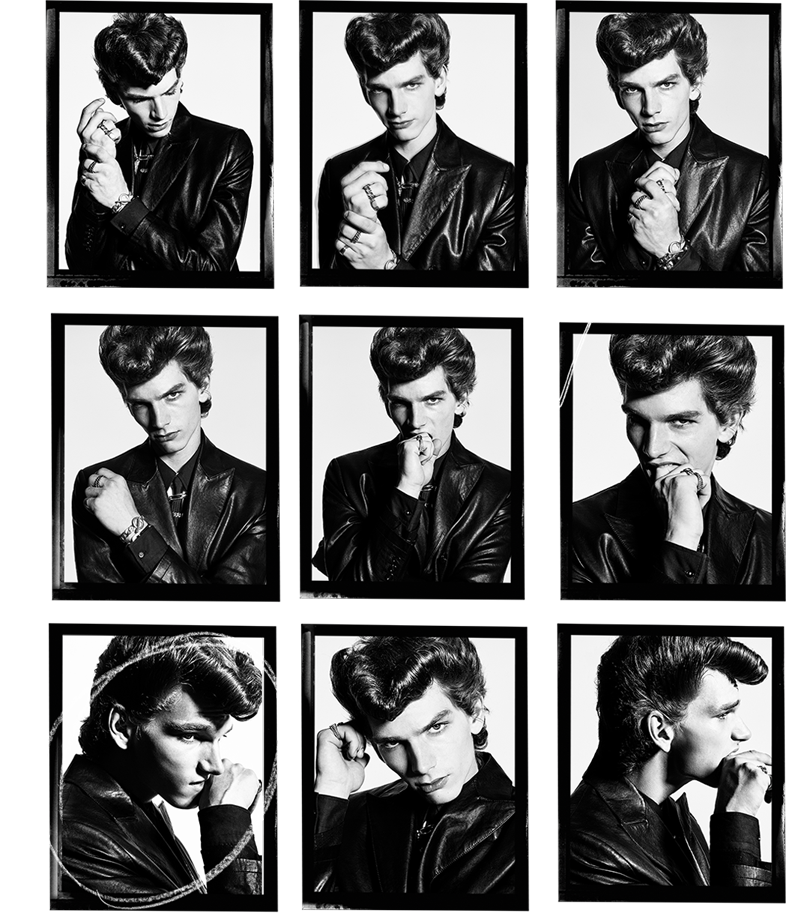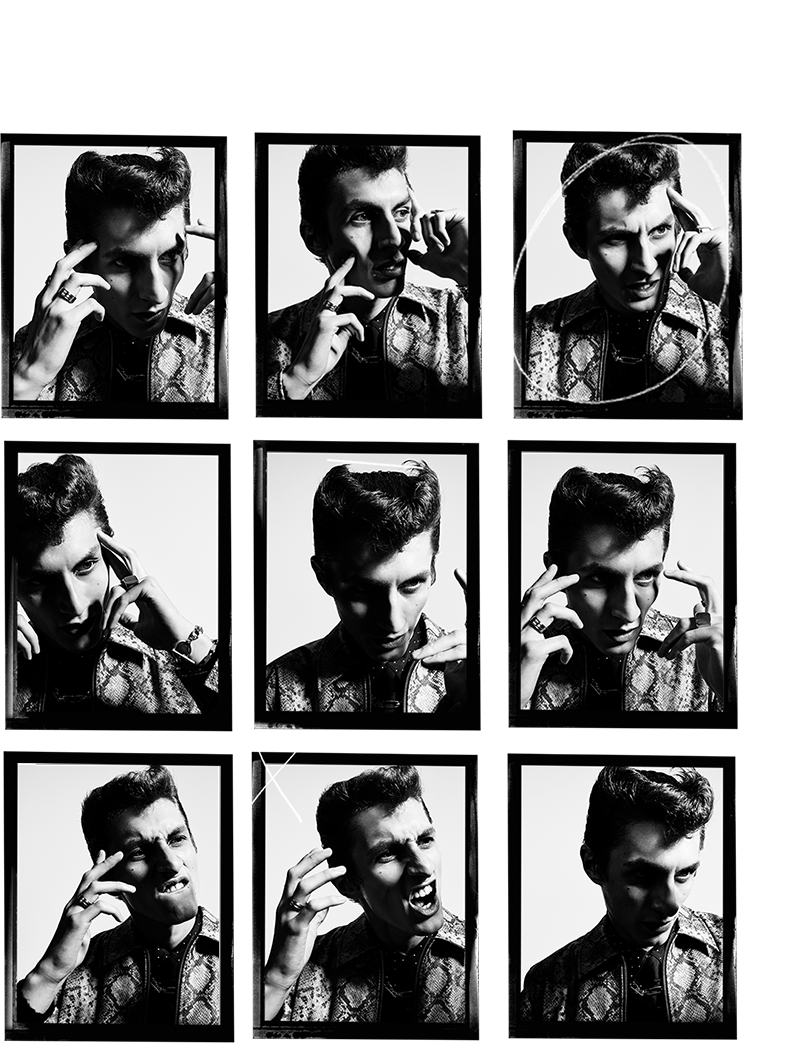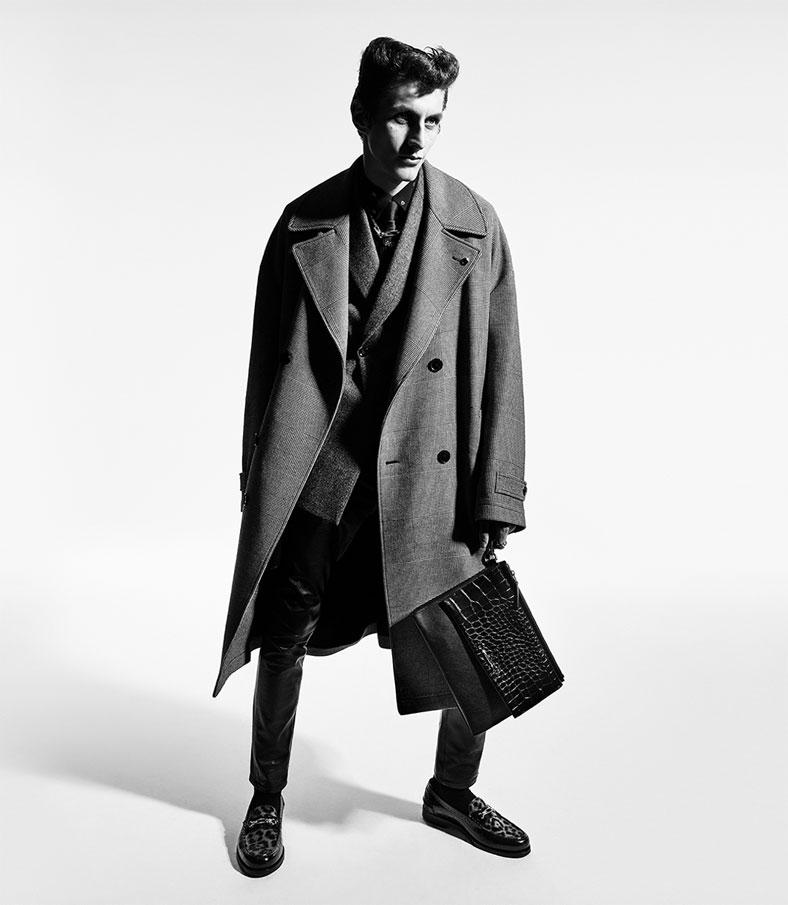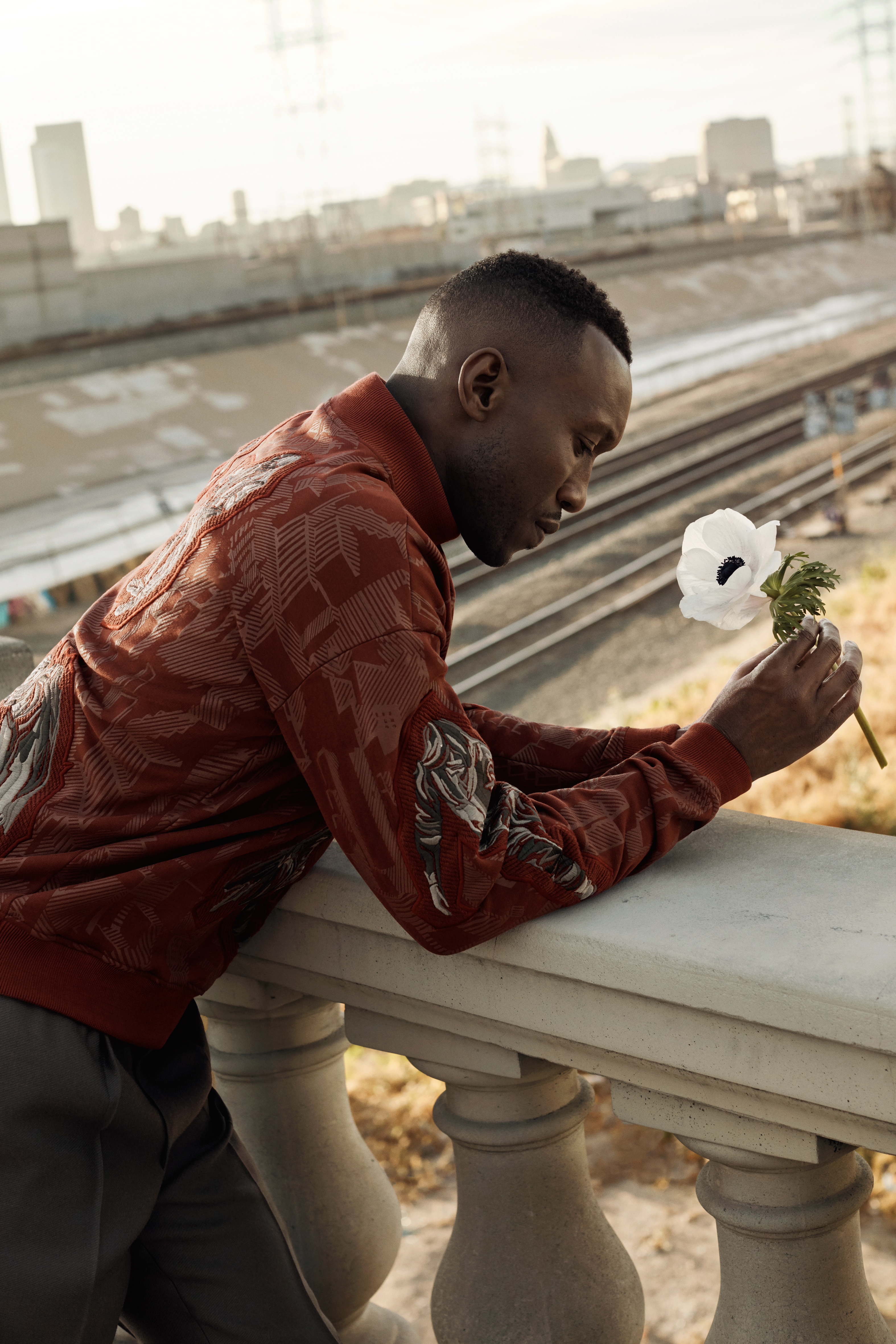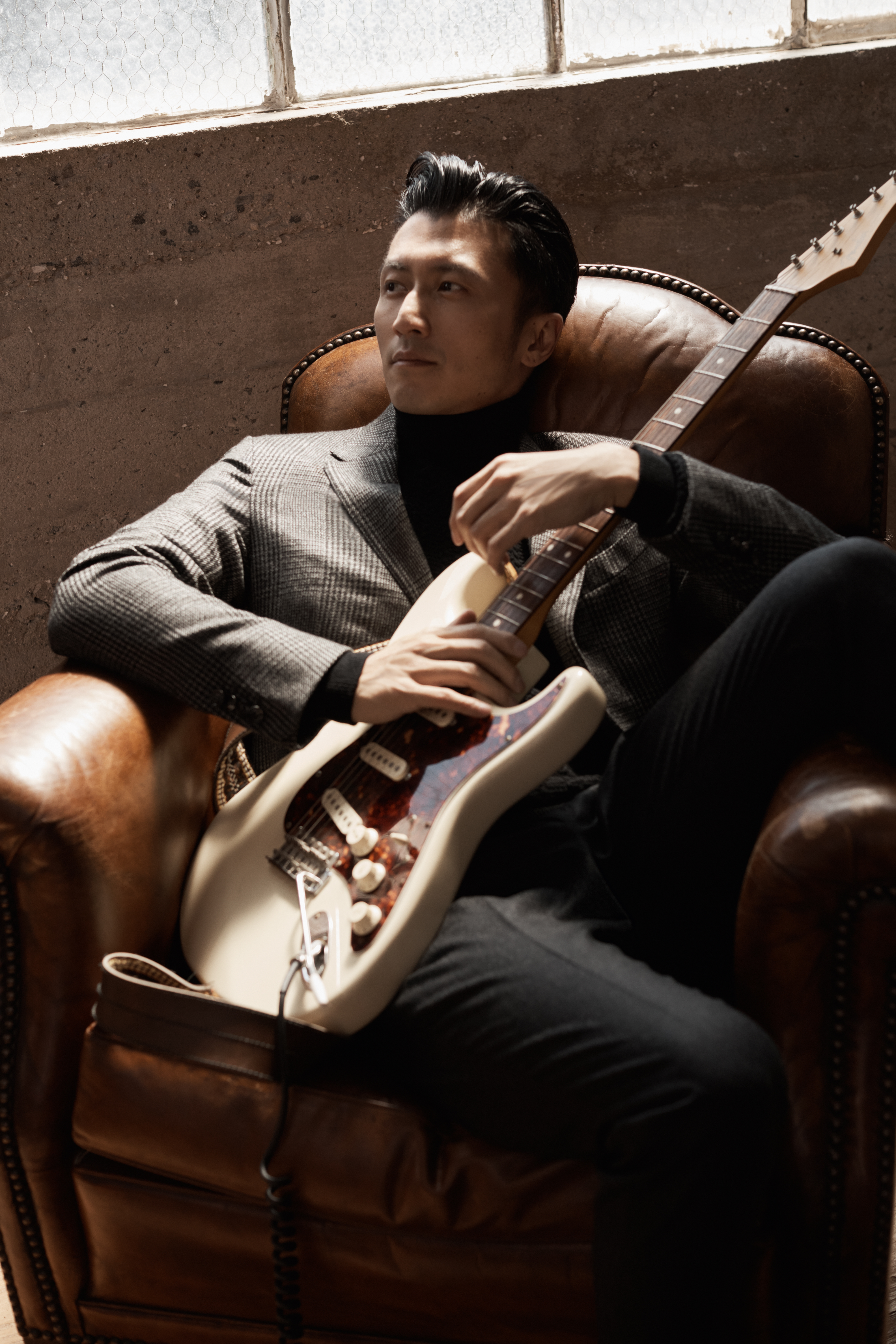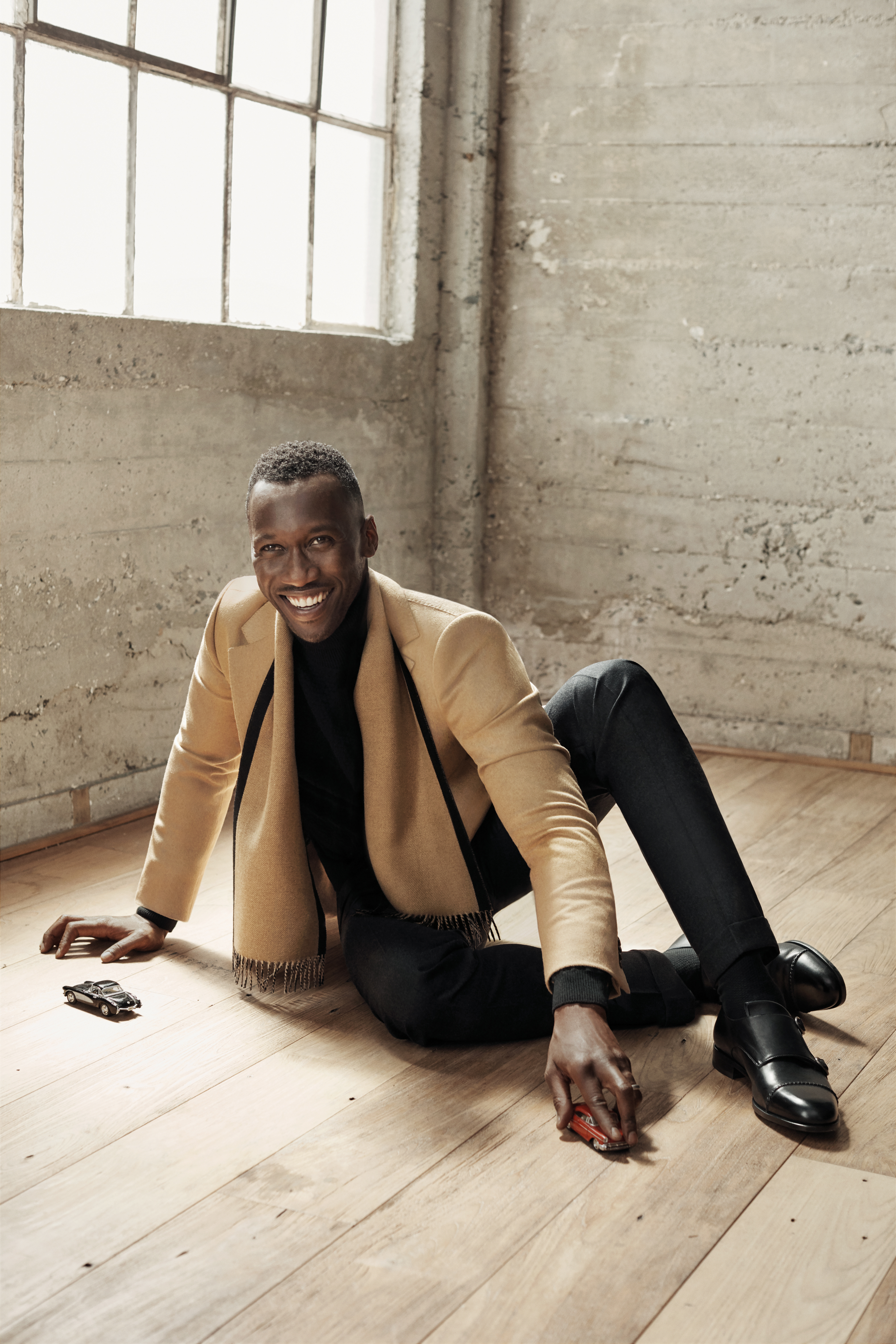Men’s storytelling has evolved, albeit it still has a long way to go to match the volume of the narrative coming out of women’s. This season a number of design houses stepped up and created winning campaigns that elevated the over-all field and raised the bar for next season. Here our Chief Impressionist, Kenneth Richard, discusses The Best Men’s Fashion Ad Campaigns of Fall 2019.
Boss
Museums, much like an outfit are curated. They both encompass thoughtfulness and beauty. Fabien Baron’s recent fall 2019 ad campaign for Boss demonstrates the intention of the artist in both the fine arts and fashion. And what better place to stage the houses fall campaign entitled ‘#B0SScurated’ than in a gallery itself—where the art becomes the viewer, and the viewer becomes the art.
Directed by Fabien Baron and lens by Craig McDean the film sets the tone for the campaign and breaks new ground for fashion branded films. Utilizing a mysterious soundtrack by Nils Frahm entitled Mi (Soul Channel Rework) three gallery viewers witness themselves frozen as black and white portraits, as installations in the gallery. The more the viewer engages with their twin, it awakens, and the body inside finds movement and color.
The piece brings the artwork of Robert Longo as well as Jordan Peele’s 2017 directorial debut Get Out. The Boss film evokes similar tropes, opening with model Alpha Dia floating in an empty world. The film continues to reveal
As creative director, Fabien Baron has created a campaign that is worthy of analysis as an art installation in itself. The motifs present in #B0SScurated are ones that the industry had yet to see actualized through visuals. Through merging still and motion, Fabien Baron and Craig McDean have visualized a film that incites a dialogue about the wonders of technology, its role in futurism, and how bodies are (re)presented.
Agency | Baron+Baron
Creative Director & Film Director | Fabien Baron
Photographer | Craig McDean
Models | Alpha Dia, Finnlay Davis, & Saskia de Brauw
Stylist | Ludivine Poiblanc
Hair | Duffy
Makeup | Diane Kendal
Casting Director | Michelle Lee
Music | Mi (Soul Channel Rework) by Nils Frahm
Celine
In 1976, trying to kick his cocaine addiction and looking for a change, David Bowie moved to Berlin. Alongside his roommate and collaborator Iggy Pop, Bowie wove himself into the fabric of the city’s flourishing music and art scene, frequenting punk clubs like SO36 and befriending members of bands like Neu! and Tangerine Dream.
During this period of comfortable anonymity and artistic fertility, Bowie recorded his famous “Berlin Trilogy,” a series of three albums that many regard as the pinnacle of his career.
Inspired by the city’s connection to Bowie, Celine creative director Hedi Slimane channels Berlin’s energy and spirit into his latest campaign for Celine’s Fall 2019 menswear collection. Slimane, filling dual roles as both creative director and photographer, captures the collection in his signature high-contrast black and white, framed by lines of the city’s iconic architecture. Like his Fall 2019 menswear runway show, his models are androgynous and high-cheekboned (another homage to Bowie, perhaps), and the looks they sport feel crisp and classic. The campaign’s accompanying video features angular and spiraling camerawork contrasted with straight-on shots of these Celine men, while Berlin persists in the background, inviting and inspiring, almost a character unto itself. Calgary-based music collective Crack Cloud’s propulsive post-punk track “Philosopher’s Calling” fits right in, heightening the video’s sense of vibrant urban energy.
David Bowie’s longing for anonymity is present here. Against the iconic backdrop of Berlin, a single person becomes a mystery, an invitation. An anonymous stranger passing by on the street has a story, a song. Hedi Slimane is continuing to take Celine in exciting directions by directing our eyes and ears to the artistry all around us. The songs are there – we just have to listen.
Celine Creative Director | Hedi Slimane
Photographer/Director | Hedi Slimane
Models | Niall Walker, Steffen Peetz, & Tobias Vincentz
Hair | Esther Langham
Makeup | Aaron de Mey
Music | Philosopher’s Calling by Crack Cloud
Location | Berlin
Dior Men’s
For the men’s Dior fall 2019 campaign, Kim Jones, Creative Director of Dior men’s collections, collaborated with American punk artist Raymond Pettibon. Pettibon, brother to guitarist and songwriter Greg Ginn, founder of the punk rock band ‘Black Flag,’came to prominence in the early 1980s leading the southern California punk rock art scene.
Pettibon joins a long list of artists that Dior has collaborated with, dating back to 1946, when Christian Dior was himself a gallerist and an art collector. At 23 years old, Christian Dior worked with Jacques Bonjean at an art gallery just down the street from Pablo Picasso’s studio. The gallery showcased the work of artists like Salvador Dalí, Georges Braque, Giorgio de Chirico, Alberto Giacometti and Raoul Dufy, all before he established the fashion house in 1946.
When Kim Jones became the men’s Dior artistic director, the same sense of artistic accountability was immediately manifest in his collections. In a short period of time, he has led collaborations with New York artist KAWS (Brian Donnelly) and Japanese artist Hajime Sorayama. With each collaboration, the Dior logo is revisited and recreated. Raymond Pettibon designed the Dior logo for this campaign—rendered in his signature scrolled calligraphy in black ink.
The campaign, lensed by photographer Steven Meisel with a film by Tim Richardson, is backgrounded by the artworks of Raymond Pettibon. It serves as a captivating backdrop, highlighting Jones’s designs.
In addition to collaborating with Kim Jones on the collection, Raymond Pettibon, now based in New York City, designed a leopard print, exclusively for Dior.
Overall the campaign is a stunning representation of Dior’s relationship to artists and it is nice to see Jones carry forward the tradition of founder Christian. Punk is a movement few in fashion have referenced but fewer still have managed to capture its original spirit, and here again, the campaign is more art than the art of punk.
Dior Men’s Artistic Director | Kim Jones
Creative Director | Ronnie Cooke Newhouse
Photographer | Steven Meisel
Director | Tim Richardson
Models | Arno Dewit, Guirec Murie, Kohei Takabatake, Ludwig Wilsdorff, Jeremiah Berko Fourdjour
Set Designer | Mary Howard
Louis Vuitton
The body is adorned through a variety of means. Tattoos, earrings, eyewear, clothes, and bags are a number of ways that Louis Vuitton Men’s Artistic Director Virgil Abloh has chosen to adorn his models for his Fall 2019 collection. Virgil’s Taiga Rainbow motif is an an added embellishment that comes alive in the campaign, shot in Japan by Japanese photographer Kenta Coboyashi.
Kenta Coboyashi’s art is in adornment—adorning images that is. Coboyashi’s skillset could be described as ‘digital tagging’, using computer software to paint on his canvas. Coboyashi has full authority over his digital pen, creating motion and movement in his photographs. These photographs become multi-dimensional, abstracted interpretations of a still.
Virgil Abloh’s collaboration with Kenta Coboyashi marks the second installation of Louis Vuitton’s Fall 2019 campaign. These campaigns not only share a commonality in being based in Japan, but they both showcase the power that lies in distortion. Distortion is a form of invention. In challenging how and why a campaign should present, the Louis Vuitton team become engineers of fashion’s future.
Louis Vuitton Men’s Creative Director | Virgil Abloh
Photographer | Kenta Coboyashi
Ludovic de Saint Sernin
An intersection of sexuality, modernity, and history sits the Ludovic de Saint Sernin Fall 2019 ad campaign. Creative Director Ludovic de Saint Sernin combines his designs with the sets and art skills of photographer Willy Vanderperre and art director Simon B. Morch.
Ludovic de Saint Sernin launched his own label in 2017 after previously working with Balmain. Quick to gain notoriety, Saint Sernin was on the shortlist for the 2018 LVMH Prize and is known now for his lines of minimal, sensual men’s wear. Here, the campaign perfectly captures his thematic designs as the images containing two models portray an essence of homoeroticism and art. The suggestive layout and intimate gazes of the models in minimal clothing emit an atmosphere of sexuality.
Notable photographer, Willy Vanderperre, lenses this harmonization of time periods for Ludovic de Saint Sernin as he blends modern photography with baroque-like painted backgrounds. Historically, baroque paintings often captured religious or spiritual ideals and motifs. However, the campaign is still able to seamlessly combine a recognized religious artistic style and the sensual clothing of Ludovic de Saint Sernin. Vanderperre, with the set design of Pepijn Van Looy, is able to utilize the atmospheric tones of baroque form and further accentuate the erotic line’s beauty.
Vanderperre and Morch’s use of collaborating seemingly opposites is executed in an intriguing and rewarding finish. The Ludovic de Saint Sernin fall 2019 ad campaign takes a variety of contrasting ideas–modern photo and classical painting, religion and eroticism–to create a cohesive, creative, and commendable campaign that may find its way onto The Impression’s best of men’s ads short-list of the season.
Ludovic de Saint Sernin Creative Director | Ludovic de Saint Sernin
Art Director | Simon B. Morch
Photographer | Willy Vanderperre
Models | Doeke Smulders and Jan B
Hair | Louis Ghewy
Makeup | Lynsey Alexander
Manicurist | Anatole Rainey
Set Designer | Pepijn Van Looy
Casting Director | Piotr Chamier
Production | Entrée Libre
Palomo Spain
When Palomo Spain debuted their 1916 Fall 2019 collection last February at New York Fashion Week, they stayed true to their essence—flamboyant and sensual designs that disregard the rules of traditional menswear. And thankfully just like their shows, Palomo Spain campaigns have no inhibitions whatsoever showing desire manifested through nude models and dominatrix.
This week, Alejandro Gómez Palomo released a sultry campaign shot by Berlin-based photographer Matt Lambert that is full of art-historical allusions. Matt Lambert explores queer romance and intimacy through the campaign, drawing inspiration from Sergei Diaghilev’s Ballets Russes.
The campaign juxtaposes a formal Renaissance pictorial with documentary mayhem. “It’s two different approaches that are both so intrinsic to the house of Palomo Spain,” says Alejandro Gómez Palomo. “On one side, you have these arty, picturesque and exquisite [images] and the other more instinctive, impulsive ones that Matt uses to take us to a romantic, lustful – and almost museum-like – world.”
Matt Lambert’s work as a filmmaker, photographer, and creative director is in capturing 21st-century sex, especially that of queer romance. He captures the hard and soft edges of sexuality and everything that exists within the spectrum. Normalizing queer romance through 17th-century references is incredibly powerful and distinguishes Palomo Spain as a house that activates and inspires.
Palomo Spain Creative Director | Alejandro Gómez Palomo
Photographer | Matt Lambert
Production | Jannis Birsner, Aida Cabrera
Post Production | Studio RM
Models | Elliot H., Pol Roig Valldosera, Alejandro Lavirgen Franco, Nathan H., Jordan Kindell, Luca Ateca
Stylist | Alicia Padron
Grooming | Guillermo Matellano
Casting Director | Antonio Delgado
Location | Madrid, Spain
Raf Simons
Perhaps no other designer has championed the modern revitalization of menswear more than Raf Simons. For Fall the designer reteamed with long-time photographic collaborator Willy Vanderperre and styled by Olivier Rizzo. The campaign projects almost a monastic, quasi-Japanese shogun warrior feel to it merging studio and naturalistic settings. The result is a well-balanced campaign that reminds us that Simons understands the duality of man and nature finding harmony within it.
Photographer | Willy Vanderperre
Styling | Olivier Rizzo
Make-Up | Lynsey Alexander
Hair | Louis Ghewy
Casting | Ashley Brokaw
Models | Misha Natali, Luca Lemaire, Maoro Bultheel, Mamadou Lo
Production | Mindbox Productions
Post Production | Triplelutz
Saint Laurent
There is a myriad of reasons to cast celebrities in ad campaigns these days, typically lead by expanding the brands’ digital reach and down-aging the house to entice a new fanbase. However, ever once in a while, a lion will make a move to cast a celebrity for no other reason than their aura is aligned with the house.
Which is why Saint Laurent’s Creative Director Anthony Vaccarello cast actor Keanu Reeves as well as Finn Wolfhard, aka Mike Wheeler from Stanger Things, in the house’s fall men’s 2019 ad campaigns. Teaming once again with lensman David Sims and stylist Alastair McKimm the trio captured the forever young 54-year-old and Bob Dylan-like 16-year-old looking far from his character’s high buttoned striped 80s polo looks.
The campaign speaks to the house’s focus on ‘coolness’ over q-scores and awareness validating a trust in the instincts of Vaccarello and trust in the path marked by the labels DNA. Which sadly today is a strange thing.
Saint Laurent Creative Director | Anthony Vaccarello
Photographer | David Sims
Talent | Finn Wolfhard
Valentino/Undercover
The truth is out there, and Valentino is going to find it.
The iconic fashion house recently debuted its Fall 2019 Men’s collection, a collaboration between Valentino’s creative director Pierpaolo Piccioli and Jun Takahashi’s streetwear brand Undercover. Apparently inspired in equal parts by Edgar Allen Poe and David Bowie’s “Space Oddity,” along with robot heads and “VALENTINO” branding, UFO patterns appeared throughout, offering a playful sci-fi vibe in tandem with crisp, dark lines and semi-serious suiting.
Now the collection’s campaign has arrived on Earth. With art direction from Tokyo-based director and artist Tetsuya Nagato, the campaign further explores the collection’s dreamy sci-fi imagery, reinterpreting past visions of the future and putting them in conversation with modern styling and talent. Valentino-clad human beings turn their gaze to the sky as 1950’s-esque flying saucers descend towards the earth, while otherworldly synthesizers sizzle and pulsate to form an extraterrestrial soundscape.
The decision to frame the collection in a world of retro-futurist art feels important. Nagato’s use of painting and collage, rather than something like, say, scientific photography, situates the campaign in a world of the imagination, an alien fantasy of abduction and exploration. Its scope is not merely limited to the earthly and human; it reaches across the cosmos, encompassing both what is and what could be. But the fantasy is still humanly seductive: there is a certain allure as we see a man’s head slowly disappear as he rises upward into an alien spacecraft, a sense of empathetic longing as he takes his eyes off us and fixes them on the night sky.
Whatever lies beyond our solar system, Valentino and Undercover have shown us that it is very cool. It may not arrive on Earth in this lifetime, but we can still imagine, still be inspired, still look up at the stars. Here’s to hoping.
Valentino Creative Director | Pierpaolo Piccioli
Art Direction & Digital Collage | Tetsuya Nagato
Photographers | Katsuhide Morimoto, Taro Mizutani
Director | Tomokazu Yamada
Models | Azuri Enomoto, Cheikh Kebe, Yuki Kawahara, Keiju Furuya, Ids Van Den Booren
Stylist | Tsuyoshi Nimura
Hair | Kenshin Asano
Makeup | Uda
Art | Enzo
Producer | Takashi Sugai
Director of Photography | Yuki Hori
Lighting Director | Koshiro Ueno
Grip | Keiichi Sagawa
DIT | Seiji Kogami
Zara Men’s
Agency | Baron & Baron
Creative Director | Fabien Baron
Photographer | Craig McDean
Director | Fabien Baron
Director of Photography | Benoit Delhomme Art Director | Christophe Derigon
Executive Producer | Mina Viehl, Jacques del Conte
Production | Seeker Productions, Nina Shiffman, One Thirty-Eight Productions
Models | Benno Bulang, Diacaria Kreminta, Erik van Gils, Henry Kitcher, Jeremiah Berko Fourdjour, Josef Ptacek, Jun Young Hwang, Mamadou Kebe, Paul Hameline
Stylist | Karl Templer
Hair | Eugene Souleiman
Makeup | Susie Sobol
Manicurist | Megumi Yamamoto
Set Designer | Stefan Beckman Casting Director | Ashley Brokaw Colorist | Tim Masick, Company 3 Music | Future Perfect Music
Zegna – What Makes A Man
The world has evolved immensely since Ermenegildo Zegna first opened the doors of his eponymous fashion house in 1910. As the world has changed, so have the men garbed by Zegna and the notion of masculinity they seek to express through the clothing. Zegna’s latest campaign seeks to spark a conversation about what constitutes this fluid concept by posing the question “What makes a man?”
The campaign purposefully does not provide an answer to this question; instead, Zegna seeks to challenge traditional conceptions of masculinity, stating “Masculinity is a state of mind, not a set of given rules. Men have been coming to terms with their inner weaknesses and strengths and are willing to take risks to embrace their own view of what masculinity is, even if this means going against traditional notions of manlihood. Men today know that fragility and failure can make them better because it is the movement of the mind and the engagement of the soul that count. Men have learned that embracing love as a positive force is a winning decision, that exploring imagination is an enriching voyage of self-discovery, that dreams and playfulness can be the qualities of adults.” By thus demonstrating the incapacity of traditional conceptions of masculinity to fully encapsulate the experience of modern men, Zegna encourages its audience to ponder what it means to be a man in a search for a new definition of masculinity.
This expressed willingness of Zegna to challenge the traditional view of masculinity is echoed in the photographs that accompany its manifesto. The portraits are intimate and warm, with the models basking in the light pouring in from just out of frame. Mahershala Ali is shown playing with diecast cars just as a child would, a smile beaming across his face; this innocent play, however, does not infantilize him but rather imbues him with an aura of ease and self-confidence. This duality is expressed in his clothing as well, which is simple yet rises to a high level of refinement through its fine tailoring and luscious fabrics. The other face of the campaign, Nicholas Tse, is shown cradling a guitar with the delicacy with which one would hold an infant. His willingness to display such a fragile gesture does not render him unmasculine but rather lends him a sense of self-assurance.
Zegna’s new campaign acts as a provocateur, challenging what it means to be a man at a time when gender roles are openly being challenged. It handles this oft touchy subject with great dexterity, encouraging a broadening of masculinity to include a scope of positive traits not found in its traditional definition. In sparking this conversation, Zegna demonstrates its timelessness, redefining the masculinity it seeks to project in its clothing as what it means to be a man continues to evolve.
Ermenegildo Zegna Artistic Director | Alessandro Sartori
Agency | Baron & Baron
Creative Director | Fabien Baron
Photographer | Josh Olins
Director | Fabien Baron
Director of Photography | Maceo Bishop
Talent | Mahershala Ali, Nicholas Tse
Art Director | Lucie Matussiere, Jeremy Kaye
Executive Producer | Mina Viehl
Executive Producer of Post | Jacques del Conte
Production | One Thirty-Eight Productions
Stylist | Van Van Alonso
Hair | Anna Bernabe
Set Designer | Colin Donahue
Editor | Graham Patterson, Modern Post
Colorist | Tim Masick, Company 3 New York
Music | Emilie Levienaise-Farrouch, Manners McDade
